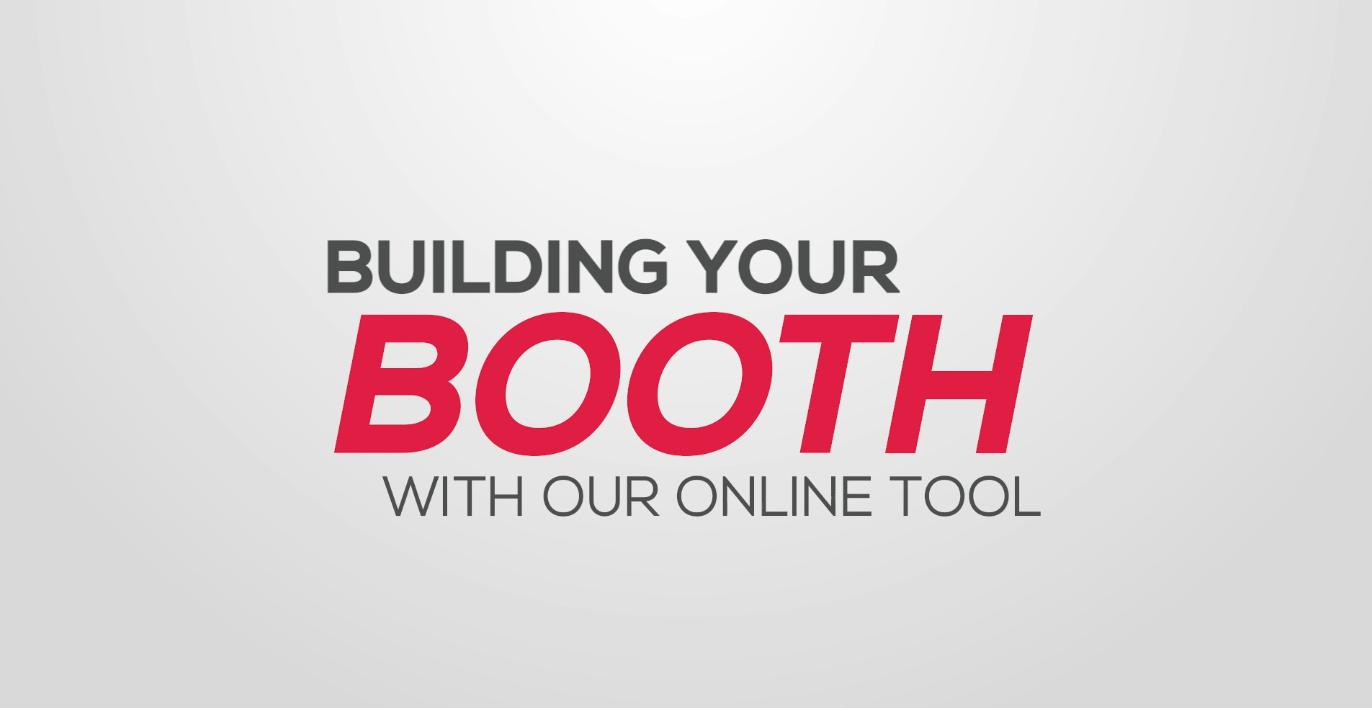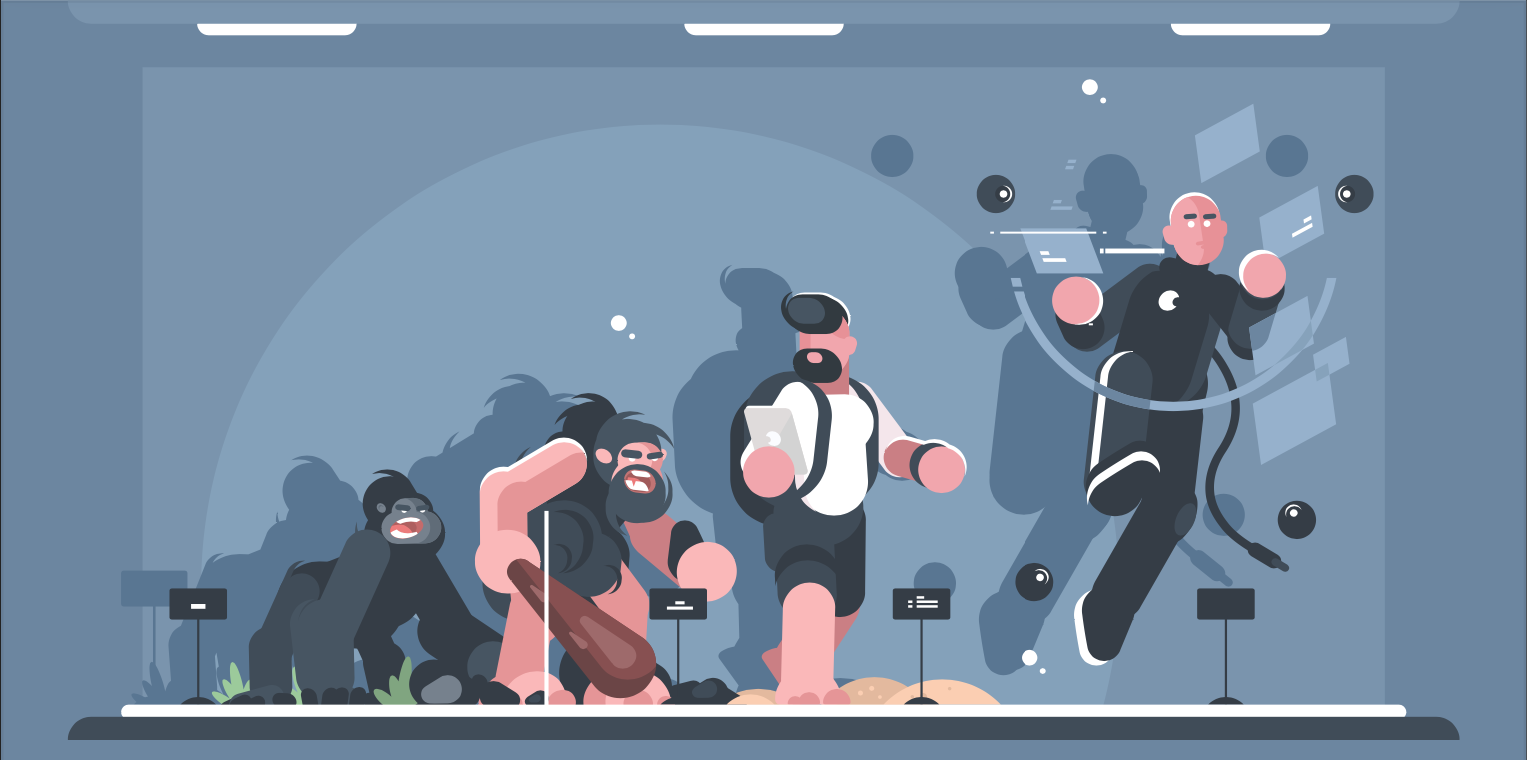
Marketing White Paper
The Evolution of Meta Environments, Virtual Learning Platforms, and Professional Mixed Reality Business Event Platforms
This white paper discusses the evolution of gamification into professionalization or professionalicationTM. Professionalication is the converse of gamification. It has developed as a methodology to create next-level interactivity and engagement within hybrid virtual reality (VR) purposed for professional business networking, higher education, and serious training.
What is Gamification?
Gamification uses game design elements to improve user engagement, organizational productivity, learning, and knowledge retention.
What is Professionalication?
Professionalication is the evolution of gamification methods applied to professional applications of online business and commerce. Professionalication leverages photorealistic personas, virtual environments, artificial intelligence (AI), and new hybrid audio, visual, and animation techniques to deliver real-to- life professional interactions. HRealityTM is the first, innovative example of this new methodology incorporating realistic professional body language, body movements, and nuanced business and meeting decorum within one-to-one virtual interactions of industry, business, and education participants.
Why do the differences matter and how will it impact commerce in the future?
Traditional Approach to Gamification
In the age of digital transformation, how do we take experiences based on physical presence and tangible logistics and reproduce them at the professional level? Through focused, cross-disciplined efforts, a plethora of new and converging technologies, and a different approach to traditional gamification.
Gamification: is the application of game- design elements and game principles in non- game contexts to improve user engagement, organizational productivity, learning, and knowledge retention (Wikipedia).
Gamification commonly uses game design elements to improve user engagement. In the 21st century, we’ve gradually seen gamification be applied to most industries. One example of gamification in a business context is the U.S. Army, which uses military simulator America’s Army as a recruitment tool.

As you can see, gamification is more than whacking jewels. With high-fidelity military simulators, the methodology behind gamification crossed the threshold and permeated as a default solution of the times into what was then dubbed serious simulation. In HR, serious game and simulation practices are leveraged similarly with the purpose of changing people’s paradigm and methods through rewarded repetitions to operate at that company’s standard.
In the digital word, this is incredibly valuable and has seen huge proliferation in the business economy, from the many early iterations of the methods. It’s actually been more than a decade since the measured GNP produced from the gaming industry surpassed the entire film and entertainment industry. Last year, the sale of digital real estate eclipsed all oil sales. Up to 70% of all curriculum is now available to students online.3
Why Gamification Works — for Gamers
Gamification is all about motivating the desire to do something and motivating users’ willingness to continue.
Traditionally, researchers thought motivation was extrinsically driven when using computer systems; however, many modern systems use intrinsic motivations to drive their use. Examples of gamification that use intrinsic motivations are virtual worlds, online gaming, learning/ education, and online shopping.1
Due to its intrinsic nature, gamification’s motivating factors are fueled by dopamine, the chemical signal your body releases when you experience something pleasurable or satisfying. A vital game design element of gamification is receiving a reward, which is consequently one of the biggest triggers of dopamine, leading gamification to be a repeatable technique across industries for leveraging people’s natural desires for socializing, learning, mastery, competition, achievement, etc.1
The more you do something, such as completing a task or chore, the more dopamine you receive, and the easier it is to stay motivated. Gamification attempts to replicate this model. An important aspect of gamification is the user-centered technological design, which promotes greater connectivity and positive behavior change.
Why Gamification is Gamey in Education
However, in education, gamification has become synonymous with Badgr for its learning pathways and achievement badges. This is a variant of the application of gamification that uses badges to confirm learners’ achievements and visibly show the accomplishment of goals. While the existing gamification models touch on the use of intrinsic motivations to drive goal completion, it excludes driving natural desire for learning, mastery, and socializing. By gamifying education credentials, the early go-to-market education credentialing companies have cheapened the dignity in which they are earned and communicated. This places the source of motivation as a quick dopamine hit (or fun) over driving true desire and willingness to do something for the betterment of self, a key component in motivating learning. See more on FabCom’s answer to this with Blocksolid.
Further, studies have shown that gamification helps with the retention of knowledge4, but it’s missing the other connective, human-to-human interactive factors proven to assist learning by tapping into human cues.
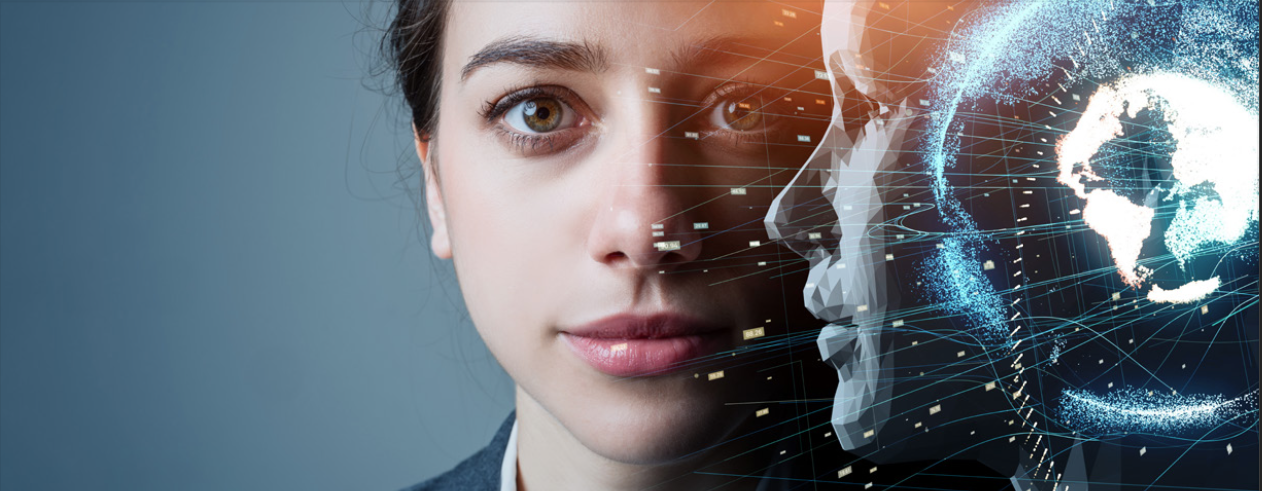
When it Comes to Recreating Realistic Interpersonal Interactions Required for Business, Gamification Technology Falls Short
While gamification has been applied to every industry in almost every way, it has yet to find a foothold in professional business interaction. This is because the end product is typically frivolous and too casual for more serious interactions of business, health, or education.
Up until this point, those who deployed gamification in professional settings sought to capitalize on the addictive fun of games and gambling through visceral gaming-centric elements such as points, scoreboards, badges, gratifying sound effects, animations, and progress-tracking. Unfortunately, as new technology is adopted in laggard industries, they believe that the first iteration or deployment is absolute, once understood. Although, technology doubles its compatibility and functionality every 18 months.
When creativity is added to linear functionalities, the spec sheets don’t “prove” the improvements of new tech. It is hard for some to imagine the new, more efficient solution is in their hand, if they just wielded it with imagination. In this instance, we see academia introduced to gamification through badging and being locked into first- generation functionality and the mindset that gamification is synonymous with badging.
And within marketing, the introduction of small goals, unrelated to the primary goals of either the consumer or the business in question, enables gamification to captivate audiences with self-driven interactions, allowing it to be used as a tool to create customer loyalty and manage human desire. These are the foundations of gamification that have informed the next iteration of connectivity and engagement.
Using the foundations of gamification and the concept of relevant and engaging personified connections from NeuromarketologyTM, then executing professional business interactions within a virtual “game” environment to increase the realness and fidelity of interaction is a new approach to gamification, most similar to serious simulation. While navigating the environment uses game mechanisms, the end goal is more attuned to driving true motivation than with traditional gamification. The driving factors of creation are professional interaction, networking, and knowledge transfer with an end goal of creating high-fidelity one-to-one or one-to-many real-time communications virtually. With the advent of new 5G and 4LTE bandwidth capabilities and common access to cloud-based computer processing, along with ubiquitous browser capabilities, we have reached a new dawn. A new approach can be envisioned to provide business, education, and training the scalability of doing business virtually with the full decorum and micro-nuances of different industries, subject matter, and settings.
As human-computer interaction (HCI) technology grows in fidelity, enhanced VR and augmented reality (AR) experiences are possible by providing more natural and efficient ways for a user to interact with a real or virtual environment. HCI focuses on improving the efficiency and effectiveness of human-computer interfaces through the development of software and hardware to recognize and interpret human characteristics and behavior. Examples of HCI include speech recognition, voice control, behavior recognition, gesture recognition and tracking, spatial computing, behavioral analytics, machine learning to anticipate and meet a user’s needs, mood/ emotion recognition, visualization and display technology, haptics, tactile displays, biometric sensing, and bioacoustic sensing, to name a few.5
Darwin’s Theory of Evolution Applied to HReality
Just as technology continuously evolves, so do the applications. The time has come to leverage these emerging capabilities from the foundation of gamification to the professional world. This requires a complete rethink and different approach than extending the linear evolution of current gaming applications and common wisdom of yesterday's capabilities. Instead, new capability designed from the ground up for the nuances of business interaction is required. Simply put, the applications are infinite with the dynamic, real-time derivative ability of mixed reality technologies.
In a focused effort and steeped experience in the B2B environment, the development teams worked on the edge of advancing technologies and have now focused on a new type of interaction. While gamification was defining the introduction to the use of games outside of a “just for fun” environment, professionalicationTM is the evolution and professionalization of gamification, with a focus on personal personification and 4D realism.
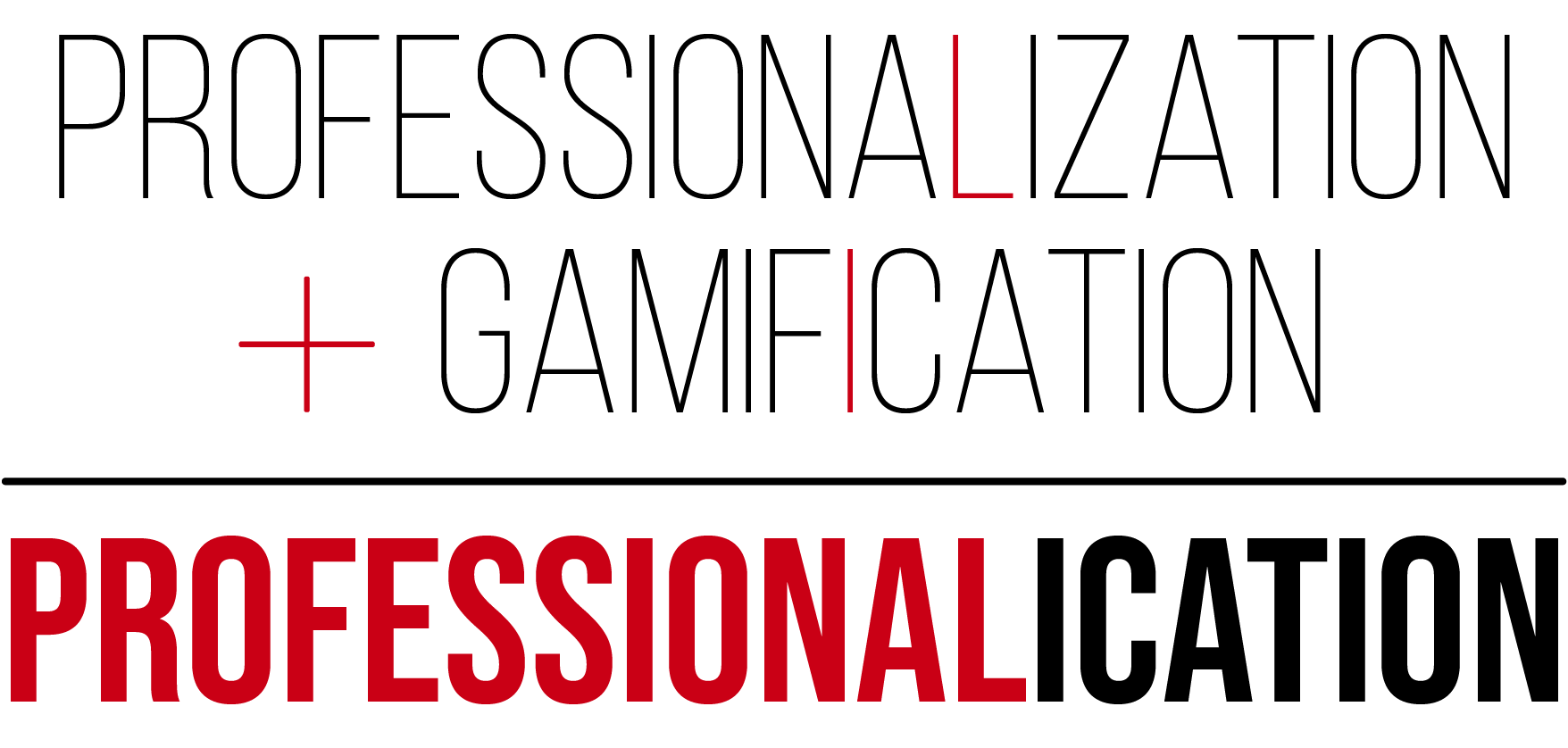
Professionalication Detailed
Professionalication is a key architectural element and concept stemming from the development of HReality. HReality is a first-person mixed reality environment that introduces natural human behaviors and appearances into professional VR environments and interactions to help foster true- to-life interactions, seamless knowledge transfer, and networking that resonates.
Now, HReality offers users the ability to elevate, democratize, and level the playing field of professional relationships in virtual business interactions.
HReality Professionalication of Body Language in Business Settings
The right or wrong moves literally can deliver or undermine your message. Believe it or not, our bodies speak louder than our words. Postures, gestures, and expressions convey reams of information—and often not what you’d expect.
Even the subtlest motions have meaning. Distilling decades of research and applying it to new and converging technologies, our HReality platform deciphers these unspoken signals: from facial expressions and fleeting micro expressions to positive and negative body language.
The Science of Nonverbal Communication Related to Business Settings
Body language is a type of nonverbal communication that uses conscious or unconscious gestures and movements. Types of nonverbal communication include facial expressions, gestures, paralinguistics, body movement and posture, proxemics, eye gaze, haptics, appearance, and artifacts (Very Well Mind).
These nonverbals makes up a huge part of daily communication, experts suggest upwards of 60% to 65% of communication is through body language (Foley GN). From unconscious gestures to how you enter a room, the things not said convey volumes of information and are crucial in our ability to disseminate information.
So, how important is nonverbal communication when people are building trust and knowledge transfer? Immensely. To establish new business relationships, people need to open up and trust the information you are giving them. In relation to decorum, it can be embarrassing if the setting isn’t right
Kinesics was first used in 1952 by anthropologist Ray Birdwhistell, who wanted to study how people communicate through movement, gestures, posture, and stance. He synthesized these ideas over several decades, which included filming people in social situations and analyzing the elements of communication previously unseen, resulting in the book Kinesics and Context (Wikipedia).
Now, through the fidelity of 21st century technology, scientists have established the validity of these behaviors. Drawing from retired FBI Special Agent Joe Navarro’s work in disseminating the scientific knowledge of nonverbal communications, our team garnered great insight into the nuances of movement, which directed the nonverbal communications of HReality.
Just take walking as an example; scientists recognize approximately forty different styles of walking, and through these distinctive walking styles, personalities, moods, and attitudes are revealed (Navarro, What Every Body is Saying 70). Take how you approach people you know versus those you don’t; to cross the bridge of professionalication requires that attention to detail.
Further, consider how insecurities, fear, love, etc. drive human behavior. Even when this isn’t discussed in the office, it subconsciously comes through in body language. In charge of thought, processing emotions, and regulating the body, the brain is a complicated organ central to this discussion. We turn to Dr. John Medina, a developmental molecular biologist and author of Brain Rules, to understand how the brain works and its role in professionalication.
Kinesics: The study and interpretation of nonverbal communication related to the movement of any part of the body as a whole, provides a scientific framework for nuanced action for us to draw and build upon as we analyze body language in relation to human-computer interaction.
A Deeper Look into Brain Science and Body Language
External experiences are crucial to how individuals see the world. During the forming of the brain, the brain leaves parts of its neural construction project unfinished, specifically for external experience to direct it. Known as “experience expectant” wiring, this dictates visual acuity and perhaps language acquisition (Medina 60).
This type of experience dependent brain wiring explains that “our brains are so sensitive to external inputs that their physical wiring depends upon the culture in which they find themselves” (Medina 61). This means our brains are wired differently dependent on the culture we find ourselves in, one of the many reasons why the little nuances of body language are so important.
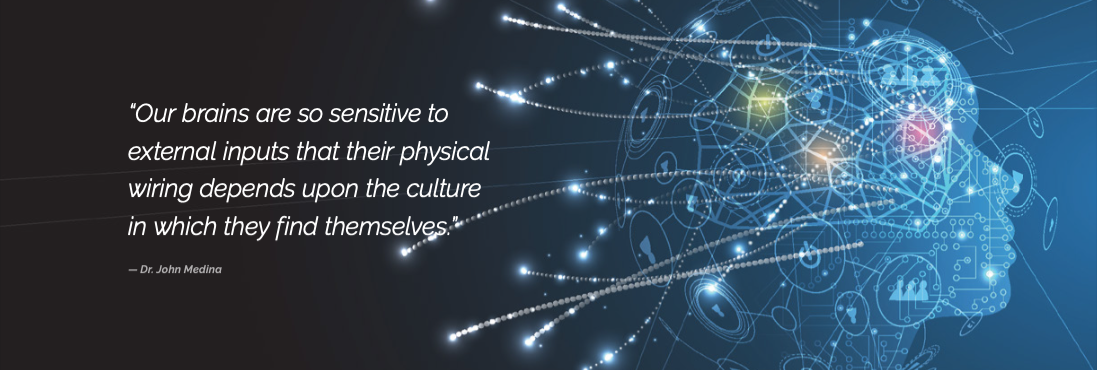
Just as body language is determined by culture, so is it influenced by psychographic attributes, which are traits that include personality, values, options, attitudes, interests, and lifestyles. Psychographic attributes affect overall behavior and emotion. Consider syntextual. When someone searches online, their context and syntax dictate true search intent.
When you’re virtually interfacing, it’s your body language that dictates action, not your IP. It’s on behalf of the brand that we offer this connective experience and are redefining what this type of data capture can mean for industry and education with quantum analytics.
The other type of brain wiring is experience dependent brain wiring. Here, “the brain is hardwired to not be hardwired," which can now be harnessed for a hybrid mixed reality. This is where HReality is able to take the reins with a hybrid mixed reality environment and lead users to experience new ways of interacting and help usher in connecting on a professional level that wasn't possible before.
Further, “Learning results in physical changes in the brain, and these changes are unique to each individual. Not even identical twins having identical experiences possess brains that wire themselves exactly the same way. And you can trace the whole thing to experience” (Medina 62).
Medina on brain stimulus and attention states, “We have the ability to detect a new stimulus, the ability to turn toward it, and the ability to decide what to do based on its nature.” (Medina 79). Just as the brain works in real life, HReality prompts these natural discovery experiences to happen.
Psychologist Michael Posner studied the role of attention or engagement in high-level tasks such as visual search, reading, and number processing. Through this, he created a model that offers testable predictions about brain function and attention, which lead to the discovery of hundreds of behavioral characteristics. Of these, four have considerable practical potential for HReality when crafting new ways to deliver the innovations and possibilities of mixed realities: emotions, meaning, multitasking, and timing (Medina 79).
Timing: HReality utilizes real-time timing. This allows for seamless interaction with others and the environment. When someone walks up to you, you can react and interact in real time.
Multitasking:The HReality environment allows for multitasking in the environment, versus interacting with a static screen. You can move and decide what to do and where to go.
For example, in a traditional trade show setting, when you walk by a booth, you don’t immediately engage with each person at the booth. You walk by, grab something quick, and when you’re ready to engage, you make eye contact and start conversation. HReality offers the same fidelity of interaction, mirroring the natural human process of timing and multitasking.
Emotion:Medina on emotion states, “Emotions get our attention. Emotionally arousing events tend to be better remembered than neutral events” (Medina 79). HReality taps into the natural emotional patterning of humans by understanding why people react in a certain way when exposed to certain stimuli.
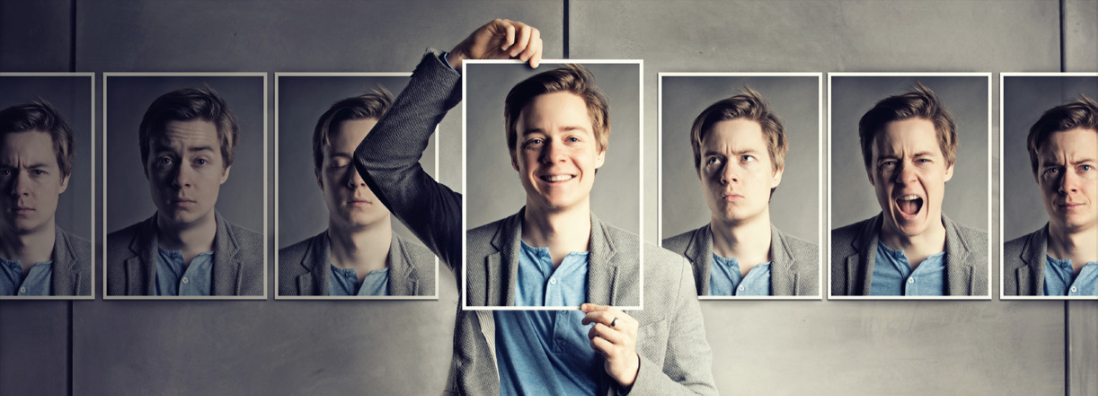
The facial feedback hypothesis, connected to the work of Charles Darwin and William James, suggests that facial expressions are crucial to experience emotion. While the theory proposes that facial expressions impact emotions rather than being a response to emotion, the ability to accurately express emotion within the environment and the photo-realism provides the facial nuances and body movements that are the basis of establishing visceral one-to-one connections.
Meaning: When discussing how the brain remembers, “Meaning before details. The brain remembers the emotional components of an experience better than any other aspect. Studies show that emotional arousal focuses attention on the “gist” of an experience at the expense of peripheral details” (Medina 83). Meaning, people focus on and remember how something made them feel more so than any external stimuli.
Further discussing brain processing, encoding is an important aspect, “From a purely psychological point of view, it is the manner in which we apprehend, pay attention to, and ultimately organize information for storage purposes. Encoding prepares information for further processing” (Medina 106). When someone is coming towards you, each person encodes and processes this action differently, which effects the reaction. Consider how each person interprets that very differently, which is why our subconscious movements better relay how we truly feel.
Consider how you react when a man approaches you verses a woman. Do you lean back to provide space? Lean in to show your interest? It all depends.
The Specific Decorum of Business and Mentorship
Business etiquette is more than just being kind to your desk neighbor. Etiquette weaves the relationships of business. Business etiquette, through the decorum of respect, position, and efforts, helps build long-term professional relationships with co-workers, managers, clients, and customers. In today’s fast-paced tech savvy environment, transitioning culturally and situationally appropriate decorum of business and education to digital and virtual realms is paramount.
Consider the ways in which physical interactions need to be replicated within virtual environments. People love interacting, touching, feeling, experiencing. Clearly, an element of human touch needs to be integrated for virtual to be a viable replication of in-person interactions. One way this can be accomplished is through head and hand gear. But we know people don’t like interacting with headgear on, which removes an element of being fully immersed in the virtual environment. A simple solution can now be found through haptic feedback.
In contrast to the direction most of industry is moving toward with headgear (read more about why headgear is not acceptable for business and educational environments here), HReality is experienced through your computer screen with the novel use haptic feedback, or FabHaptics (a FabCom spin-off being developed as an integrated hardware and software haptics company springing from the research and new demands of the hardware and software created from the innovations within HReality), to replicate decorum used when building professional relationships or mentoring.
Business and Education Virtual Etiquette
Decorum includes a range of business protocol subjects, including customer service, networking, client relations, on-boarding new employees, learning and mentorship, and effective communication. (Decorum Etiquette). One example where decorum is very important is meeting someone for the first time. Let’s use the handshake verses an abrazo as an example. “A handshake is usually the first and possibly only physical contact we have with another person. How we do it, including its strength and how long it is maintained, can affect how we are perceived by the person we are greeting. We can all remember someone who shook our had and left us feeling uncomfortable about the situation” (Navarro 136).
On an abrazo, Navarro states, “In Latin America, an abrazo (a brief hug) is part of the culture among males. It is a way of saying, “I like you.” In performing an abrazo, the chests come together, and the arms engulf the back of the other person. I have seen American businessmen who will refuse to give an abrazo ... when you do it, do it right, since little courtesies mean a lot in any culture” (Navarro 131).
Consider this: which is a better form of greeting? The answer: it depends on the country you’re doing business in. Understanding nuanced customs, the cultural environment, and having the ability accurately represent yourself is vital in a globalized business world.

How Business Body Language Affects Influence
Each industry has its own body language. Take agriculture versus high finance. Not only is the scenario for meeting different, but so are the behaviors, mannerisms, and lingo exhibited by people within each industry.
There’s a reason why the old saying “actions speak louder than words” has stuck around. Mannerisms are a dead giveaway to cut through the pretense of a person’s words.
Mannerisms are micro-behaviors that include speech patterns, gestures, and the characteristic ways in which one conducts themselves. Mannerisms can be generic or very specific, such as gender, culture, or industry based. Mannerisms are the driving behaviors of how men and women interact differently through body language.
To bring true fidelity to body movement and language within a virtual environment, FabCom searched through the best movement library databases, Carnegie Mellon University, Unity, and Rokoko, and came up empty handed. The best thing we could find was the GTA boss behind the desk.
Nowhere on the planet were we able to find what we were looking for because no one has done anything like this—there hasn’t been a need. With research in hand, our integrated experiential agency focused on creating custom character body movements and high-fidelity animations.
The Nuances of Professional Virtual Avatars
When approaching someone in a business or educational setting, the nuances are different than when meeting on the street or in a park. Depending on the environment and scenario, how you approach, address, and the following decorum of one-to-one communication greatly differs. Due to this, an expanded body of professionally- focused body movements was needed.
Framing: the biggest body of professionally focused body movements for the use of commerce and education
Overview: capture the nuances of body language when meeting someone in a business setting
Objective: to ensure that, with a focus of professionalication within the realm of virtual avatar postures and gestures, you are accurately connecting, networking, learning, leading, or teaching, your virtual interactions indicate confidence and build rapport — and do not reveal disinterest, arrogance, or even aggression driven from the virtual platform characters derived from the gaming world.
The revolutionary efforts to connect the physical, psychological, and emotional aspects of business interaction with the new technology capabilities result in users exhibiting virtual interactions with body language that is open, honest, and self-assured. This was purposefully designed to increase the real, virtual, and social influence. Users will find the ability to read the emotions and intentions of others is equally indispensable. Whether you’re giving a presentation, mentoring, or closing a deal, the right body language can be your best ally.
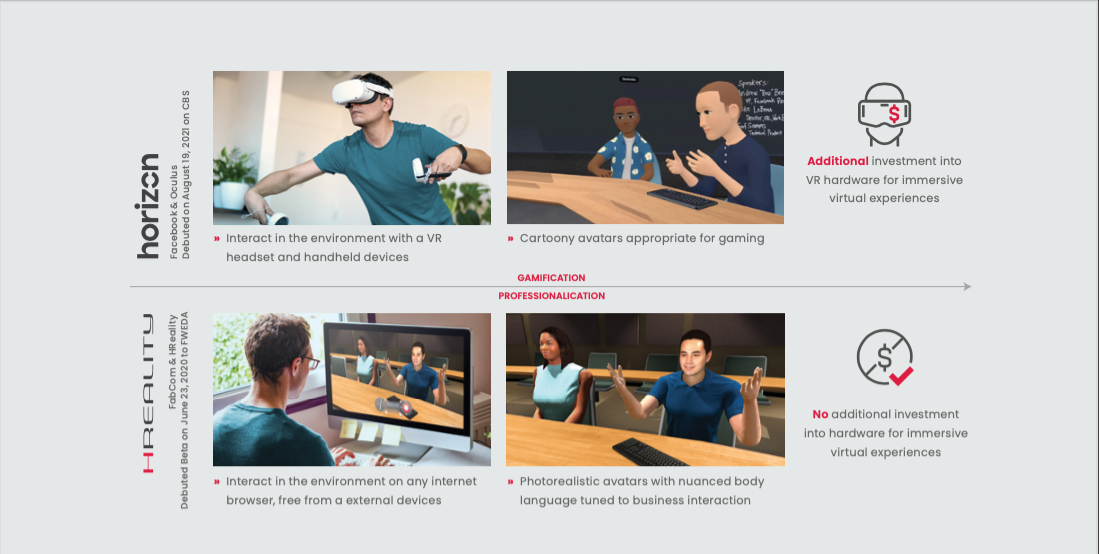
Creating the Difference Between Existing Gamification Practices and VR Business Professionalication
HReality Animation Capture Items
TEAM ASSIGNMENTS:
- Executive Director/Producers
- Virtual Team Leads
- Unity Programming Specialists
- Animation Specialists
- Technical Specialists
- Rigging/Kinesiology Specialists
- Behavioral Specialists
- Cinematographers
- Body Language Primary Researchers
- Project Coordinators
SUBJECTS:
- 3 males
- 2 females
RESOURCES:
- 4 motion capture suits
- Wireless WiFi
- Laptop
- Rokoko Studio (software)
- Hard drive
PROFESSIONALICATION CAPTURE SEQUENCES:
These movements were recorded in a systematic approach that depicts normal business and education human-to-human connection and interactions. The development teams at FabCom produced these capture sequences in an organized style that comes from story lines, similar sequence to filming a show.
Before starting each sequence, both actors calibrate from a standing position.
HReality VR avatars sitting at conference table
This sequence was completed with surrounding chairs empty and one person seated next to the actor to produce genuine body language for each scenario.
In this sequence, watch each actor sit. Even how we sit is dependent on where we were raised, as Navarro explains, “Each culture sits differently. In America, you will see a combination of sitting styles. When it comes to sitting behaviors, it is important to follow the local customs.” (Navarro, The Dictionary of Body Language, 160).
VR AVATAR PULLING OUT CHAIR, SITTING DOWN, AND SCOOTING IN
- IN SEQUENCE:Both actors walk toward conference table, lead in with three steps during the move, starting one meter apart. Both actors pull out their respective chairs, then walk around left side of chair before sitting.
- OUT SEQUENCE:Actors push out of their chairs and walk around the left side before walking away, leaving chairs pulled out approximately one meter from starting position.
The purpose of replicating real-life body language is to allow for a new level of interaction to be felt virtually. These interactions are with the purpose of putting your best foot forward. Consider how important confidence is on first interaction. Navarro states, “Our level of confidence is often revealed in how we sit. In part, the way we sit is cultural, but people move their legs with great reliability depending on how they feel emotionally, revealing their degree of self-assurance.” (Navarro, The Dictionary of Body Language, 160).
On how different types of people sit, Navarro explains “Higher-status individuals will usually claim as much territory as possible immediately upon sitting down, spreading their arms or their objects on the table. Even at the conference table, real estate is equated with power and status. Alternatively, the person who sits at the conference table with his elbows against his waist and arms draped between his legs sends a message of weakness and low confidence” (Navarro, What Every Body is Saying, 120).
When men sit, “Legs that are set wider apart while sitting during an interview or a conversation suggest greater comfort or confidence. This is a universal territorial display. This behavior is more pronounced in men.” (Navarro, The Dictionary of Body Language, 160-161). While women on the other hand “will sit with their knees together as a matter of social convention.” (Navarro, The Dictionary of Body Language, 160).
VR AVATAR LOOKING UP AND AROUND TABLE
- IN SEQUENCE:Both actors begin seated, look around the conference room to capture a seated idle animation.
HReality VR avatars shaking hands
Handshakes are an important part of business; they show willingness to make an acquaintance, establish equal understanding between parties, and are an essential element in the physical assessment of another person’s energy and vitality (Wezoski, 32). So, when interacting virtually, a handshake is one of the most imperative actions to professionally replicate with game animations.
A proper handshake has two essential aspects: both hands are held in a vertical position and the same level of pressure is applied by both parties to ensure that neither is superior or inferior (Wezoski, 33). This nuance is especially important to keep in mind when men and women shake hands.
VR AVATAR HANDSHAKE (STANDING FACING EACHOTHER)
- IN SEQUENCE:Both actors start one meter apart, facing each other for calibration, before shaking hands briefly.
VR AVATAR SEATED HANDSHAKE
- IN SEQUENCE:Both actors sit and then turn to the left/ right, then shake the hands of a stand-in who is not being motion-captured.
Men are from Mars, Women are from Venus
Watching the animation, notice the differences between the male and female actors. The nuances of body language extend past the physical interaction of the handshake.
The male sits erect with his legs casually held together. This is an important stance to recognize, if he was more relaxed with slumped posture and spread legs, he gives off the wrong impression and could come off as intimidating, dominating, or territorial in an act of splay behavior (Navarro 102).
Notice how his forearm is extended towards his counterpart, but his upper arm still held close to his body. On the other hand, the woman leans into the handshake to show interest. Navarro explains, “We demonstrate comfort by using our torsos and shoulders to lean in the direction of that which we favor” (Navarro 89).
Specifically, when men stand, “We use our legs as a form of territorial display by how we stand. The further apart our feet, the greater the territorial display. The spread of the legs transmits clearly a sense of confidence and a subconscious claiming of territory.” (Navarro, The Dictionary of Body Language, 158).
HReality VR avatar clapping
Used as a form of praise, clapping shows enthusiasm, approval, and interest.
VR AVATAR CLAPPING
- IN SEQUENCE: Both actors calibrate from a standing position, then sit down into a chair before clapping their hands after a short, directed delay.
HReality VR avatar crossing legs
Leg crossing is a display of high comfort and confidence. The chosen leg to cross over top is dependent on the environment. Typically, if someone is sitting next to a friend, the opposite leg is crossed on top to open the torso to the friend. If a stranger sits down next to someone, they will unconsciously cross the leg on the same side as the stranger over top, to point their hips away from the person, signifying that conversation isn’t welcome (Navarro, What Every Body is Saying, 73).
While there are general nuances to leg crossing, the key with leg crossing, as clearly seen in the video, is that it is displayed very differently between male and female counterparts.
Men more often cross their legs in such a way that the top leg is held at a 90-degree angle. This exudes self-confidence and comfort in surroundings. This can also mean that they’re ready to discuss, debate, or argue (Wezowski 73).
Due to social convention, many women sit with their knees held together and this behavior isn’t telling of her level of comfort or confidence in a situation. This is also evident in the way a woman crosses her legs.
VR AVATAR LEG CROSSING
- IN SEQUENCE: Both actors calibrate from a standing position before sitting down in a chair and crossing the right leg over the left. Both actors will then stand back up before returning to a seated position and crossing the left leg over the right.
HReality VR avatars having active conversation
“During conversations or meetings, as information and opinions flow, our feelings about the news and viewpoints also will flow and be reflected in our ever-changing nonverbal behaviors.” (Navarro, What Every Body is Saying, 89).
When we study knowledge transfer, mentorship, and human interaction within business and education, the large and small movements that take place during conversation make the most impact.
VR AVATAR CONVERSATION
- IN SEQUENCE: Both actors start one meter apart, facing each other for calibration, before engaging in conversation while recording the motion.
Consider the angle you converse with others, “Most people prefer to talk to others from a slightly angled position, rather than directly face-to-face ... when businesspeople stand facing each other at a slight angle, the amount of time they spend together increases.” (Navarro, The Dictionary of Body Language, 158-159).
Active listening and micro gestures during conversation are critical in disseminating meaning, In The Dictionary of Body Language, Wezowski describes “If you are listening to someone, it is best to lean slightly forward and nod gently. Focus your eyes on your conversation partner and tilt your head a little bit to the right. If you are talking to someone, make sure that your arms and legs are not crossed.”
“If you are standing, keep your back upright: this allows you to breathe more deeply than with a bent back. A straight back lets people see that you are giving yourself the necessary room and air. As a result, they will be more prepared to listen to you, have more interest in what you say, and will take your opinions more seriously” (Wezowski 40).
The use of hands makes for lively conversation. This lets others know that you are engaged with what you are talking about. Wezowski later states, “Large hand movements, implemented calmly but decisively, emphasize a person’s self- confidence” (Wezowski 75).
VR AVATAR WAVING
- IN SEQUENCE: Both actors calibrate from a standing position and wave.
VR AVATAR SITTING DOWN NEXT TO OTHERS AND LOOKS AROUND
- IN SEQUENCE: Both actors calibrate from a standing position, point/nod towards an empty seat, scoot through auditorium row, pull chair seat down, and sit. They look to the left and right at the others seated near them, then shift opposite and smile as they look up.
Described as being the hand movements used by leaders, hand gestures are commonly used to positively influence points during speeches or business meetings. Here, they “serve to inspire others to greater efforts. Most of the world’s best speakers use this technique to get their message across more forcefully” (Wezowski 75, 76).
The ability to visually show the nuances of someone’s self-confidence or power to perceive and influence is crucial to business.
In The Dictionary of Body Language, Joe Navarro writes on the topic of hands: “When we are comfortable, our hands naturally gesture and emphasize. In some cultures, people tend to gesture more emphatically, and these gestures are highly significant in context. Great speakers also gesture frequently.” (Navarro, 131-132). Hand gestures bring an element of realism and authenticity to interactions.
“Hand movements not only assist in communicating important information, but the brain is actually programmed to give greater attention to the hands, wrists, and fingers compared to the rest of the body” (Navarro, What Every Body is Saying, 134).
Hands influence how we are perceived and perceive others, which contributes to overall interpersonal effectiveness. Navarro continues, “People respond positively to effective hand movements. If you want to enhance your effectiveness as a persuasive speaker, attempt to become more expressive in your use of hand movements.” (Navarro, What Every Body is Saying, 134).
New Technology Empowering New Capability
These animations were captured with Rokoko Smartsuits. These new motion capture (mocap) suits have a higher motion tracking fidelity that empowered all of this to happen differently than the bank of animations most VR environments utilize.
With 19 Inertial Measurement Unit (IMU) sensors, the suit tracks your full body, minus the fingers (although, we also utilized Rokoko’s Smartgloves to ensure the full expression of movement). Rokoko’s IMUs are “9DOF”, a term which refers to the presence of an accelerometer, gyroscope, and magnetometer to deliver full spatial and rotational tracking.
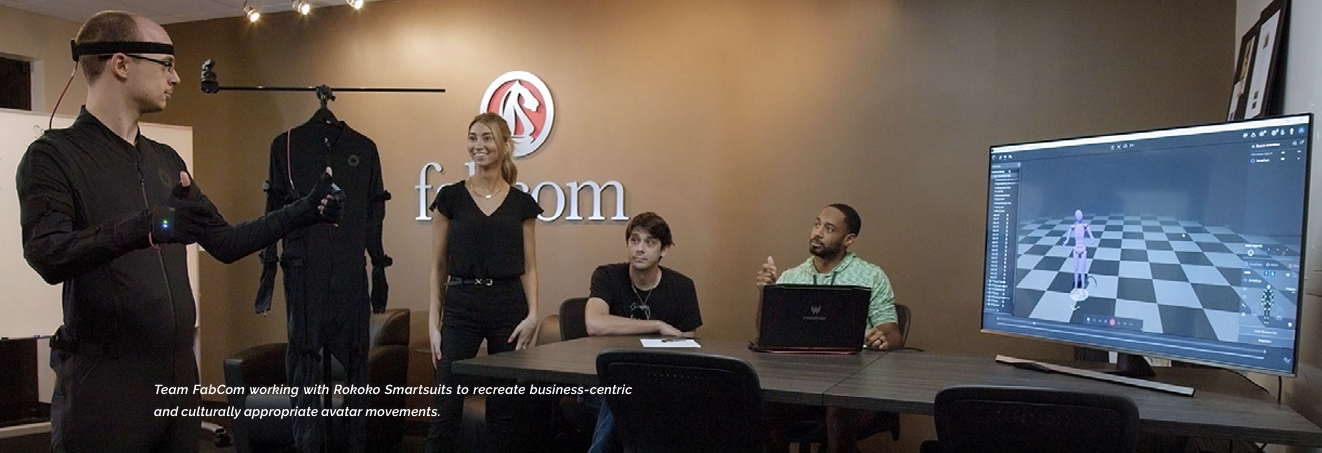
Innovations Gleaned from the Development of HReality
During the first recording sessions, the team ran into mostly hardware-specific challenges related to magnetism. Magnetism can often lead to that cartoony look, feel, and movements we’re all familiar with traditional VR and AR applications.
Our development team’s objective was to create the desired business fidelity while recording the mocap animations. When purposing VR and gaming technologies in business applications, the fidelity of interaction drives an entire paradigm that lacks confidence and trust in business, educational, or serious settings. Professionals do not want to play a game; they want to engage in relationship building and confident one-to-one exchanges of information.
The new motion capture suit technology deployed by FabCom helped minimize the traditional undesired results when using a motion capture suit, including drifting, inaccurate motions, and stuttering animations (“popping”).
While having a streamlined set of animations was the goal, animation complexity was another issue the team ran into.
- Incorporating an extensive list of animations was extremely tedious and took a lot of time.
- Possessing a lengthy list of animations caused the team to have repetitive animations.
- Leveraging a thorough list of animations caused issues with setting up an overly complex animation tree inside the Unity Engine.
HReality Solution for Cartoony Interactions
Magnetism
- Working from the middle of the room, away from metal objects, was useful in keeping magnetism down. Wooden seating also gave the team more accurate motion data.
- Foot tapping helped the motion rig readjust and find its center.
- Adjusting the pelvis size to the specifics of each character actor helped provide more accurate animations.
- Recalibrating in between scenes within each animation set took more time, but provided more accurate recordings.
Animations
- Consolidated the list of repetitive animations, so that one animation could be used and effectively reused through Unity’s avatar masking system.
- By T-posing when multiple actors are recording at the same, the team was able to figure out the space that was needed for future animations.
- Running ROM (range of movement) actions on our actors.
Evidence-Based Progressions to Innovations within AR/VR and business applications
Throughout the first recording session, and mission to raise the bar in the industry with never- before-seen fidelity in avatar personalization and business purposing, the engineering teams had a few notable moments when recording motion data.
- Delegation of roles when recording motion data over prolonged periods was key.
- Communication between members gave the group a common goal and had everyone on the same page, increasing efficiency and overall quality of the animation sequences.
- Having a properly formatted research vision and previously tested baselines gave way to raising the bar to animations that can be compounded into more complex animations. This partially led to the innovative look and feel developed by the teams at HReality.
The Devil is in the Details of Body Language
Body language varies drastically across age groups, gender, and cultures. The team is looking to accommodate a plethora of demographics, so building on what was learned will be integral in molding an innovative, intrinsic, well-rounded, groundbreaking experience.
The thing about innovation is that you can’t wait 20 years for peer-reviewed research. We took bodies of research that already exist and understood the technology extension to honestly apply the calculated value and measure that tangible value. It’s easy to see something that’s 20 times better, but it may take years to prove the efficacy of it.
In partnership with University of Advancing Technology (UAT), FabCom is conducting research on the efficacy of learning in the HReality virtual environment. The purpose of these studies conducted by UAT and FabCom will be to expose best practices and clarify the extent to which learning is enhanced when conducted within simulated environments.
A specific focus of the work will be to introduce natural human behaviors and appearances into simulated environments and examine the impact on learning. This is to prove the hypothesis that people interacting in virtual spaces with natural interactions will experience improved learning and retention.
Professionalication of Virtual for Training and Education
Professionalication is more than recording professional body movements for animation. It’s combining multiple elements like spatial computing, video, and live information to create better virtual interaction and knowledge transfer. The tactical approach can be clearly seen through the effort of the professionalication of body language, but this concept has greater strategic value. Consider knowledge transfer in a purely learning environment.
Since the onset of early VR systems in the early 1990s, immersive and responsive technologies have suggested a future where they are applied to and enhance learning. As of the 2020s, the latticed infrastructure of technologies needed to support viable learning using VR have evolved sufficiently to make this idea a possibility.
With the integration of an LMS, such as Canvas or Blackboard, HReality is able to break the fourth wall of online education. Now, kinesthetic/tactile learning can be fully realized in a virtual environment, allowing online learning to encompass all four learning modalities. These are integrated into the environment to not only increase knowledge transfer, but also to create new possibilities for education and online/ hybrid education delivery.
Experiential Learning with HReality
The way you learn is usually the way you approach life; it’s the way you make decisions, solve problems, and meet life’s challenges. Experiential learning is the process of learning through experience. The experiential learning process supports performance improvement, learning, and development.16
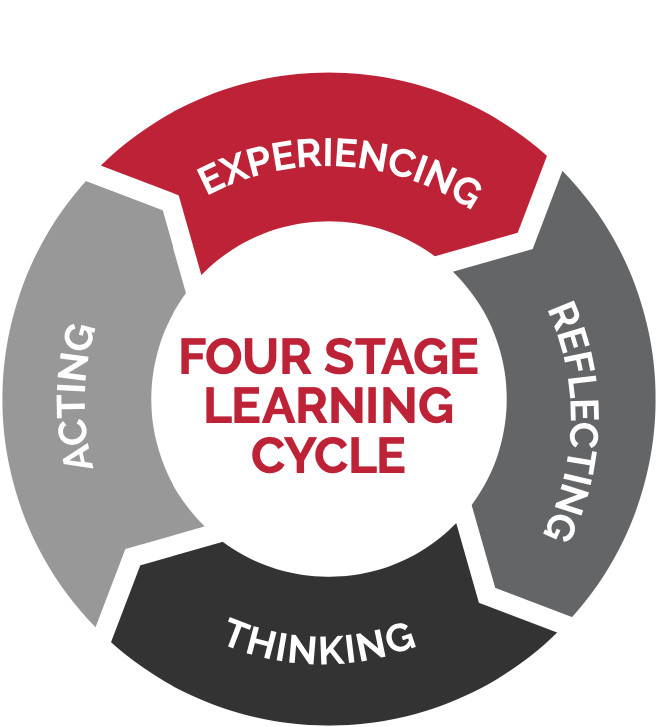
Psychologist David Kolb proposed the experiential learning theory which offers a framework for the experiential learning cycle, a four-step learning process that is in every interaction and experience. The experiential learning cycle works in four stages: concrete learning, reflective observation, abstract conceptualization, and active experimentation.16
The learning process is initiated through concrete experience, which requires reflection, review, and perspective. This leads to abstract thinking to reach conclusions and conceptualize the meaning of the experience. This leads to the decision to act, allowing the learner to experiment with what they’ve just learned. The first two stages of the cycle involve the learner grasping an experience, the second two focus on transforming an experience. This is a natural cycle that most people aren’t aware they’re engaging in learning.17
The experiential learning process supports greater learning and understanding, retention of information, and performance improvement. Experiential learning is like cooking. You can read all the recipes you want, but you don’t know how to make bread until you bake bread.
The Science of Learning Applied to Virtual Environments
Scientists and psychologists have developed a number of different models to understand the different ways people learn best.
In education, learning styles or modalities are the ways in which students use their senses to learn and acquire new skills. One popular theory, the VARK model, includes four main modalities: visual (sight), auditory (hearing), reading/writing, and kinesthetic/tactile (touch). Most people can learn through any of the modalities, but people have preferences and are often more dominate in one than the other. In business, customers are a little bit of each, and we need all four to get the most of learning.
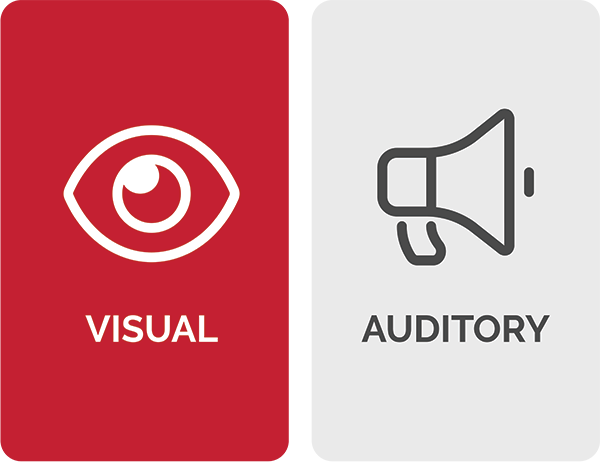
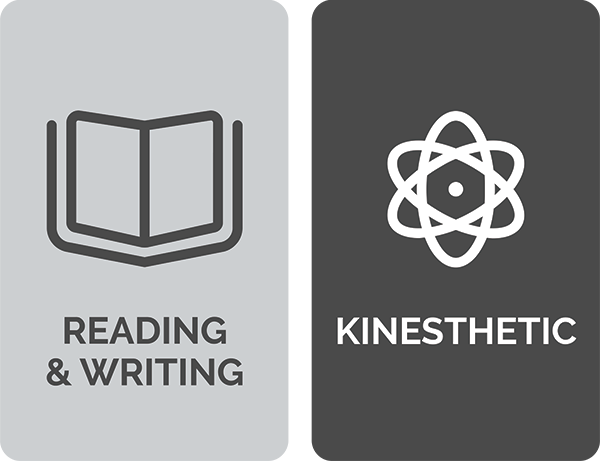
Kinesthetic or tactile learners learn through experiencing and doing things. By bringing a physical element to what is being taught, abstract ideas and difficult concepts become easier to understand. This type of learning includes simulations, demonstrations, videos and movies of “real” things, as well as practice, case studies, and applications.18
This is where current online learning systems, such as Canvas, are lacking. HReality offers the intersection of these for modern learning. HReality brings all the possibilities, from doctors training on equipment used for heart surgeries to service training for agricultural equipment, that online education can’t currently provide.
Education and VR
Education is already playing around with mixed reality education delivery. Microsoft’s Anatomy Labs VR was the first VR dissection simulator included in a university’s curriculum for medical school students. This isn’t science fiction and it works; a randomized study conducted by UCLA to test the difference between VR and traditional surgical training found that medical students who trained in VR learned 20% faster and scored 130% higher than those who trained with traditional methods.19
Consider the cost of anatomy tables, the cost to get someone into medical school, and the barriers of entry. What if you could combine the physical learning that happens in cadaver labs with the virtual anatomy labs? You lower the cost of equipment and open up access to medical school. Consider what this means for getting education into underserved communities.
Furthering the idea of creating more access to education, consider the master teacher who teaches the teacher who teaches the teacher. Wouldn’t you rather learn from the master teacher? HReality makes this possible be removing location barriers.
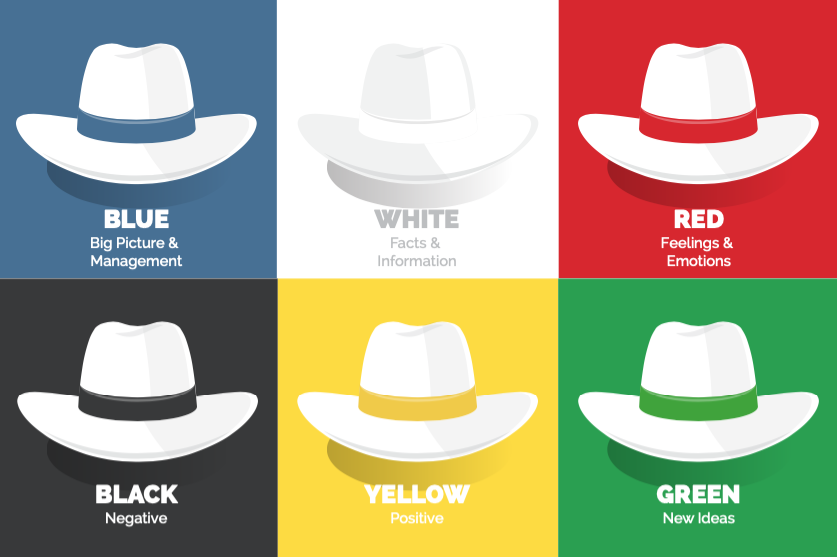
Intrinsically Motivating Learning with HReality
Students learn better when they are motivated. However, motivating students to learn requires multiple teaching styles to capture interest.
More importantly, the teacher must be a master of their subject with adequate knowledge of the objectives and standards of the curriculum, skills in teaching, interests, appreciation, and ideals. A great teacher inspires students to lead a life that is full, stimulating, and satisfying.
It’s ingrained in us all to be curious, to initiate thought and behavior, to make meaning from experience, and to be effective at what we value. When students can see that what they are learning makes sense and is important, their intrinsic motivation emerges.
From Plato to Socrates to this century, the art of learning and teaching has changed, but how the brain is stimulated, motivated, and remembers has not. With the induction of online education, applied learning and teaching styles have suffered.
According to Raymond Wlodkowski and Margery Ginsberg in A Framework for Culturally Responsive Teaching, “research has shown no teaching strategy that will consistently engage all learners. The key is helping students relate lesson content to their own backgrounds.” This includes students’ prior knowledge in understanding new concepts and their interest in the subject.20
Influencing Thinking with HReality
While the stimuli for learning comes from one of the four modalities, we turn to Dr. Edward de Bono’s Six Thinking Hats to understand how to influence thinking processes for better processing and encoding. The brain thinks in a number of distinct ways that can be deliberately challenged; this allows for a structured way to develop tactics for thinking about particular subjects. 21
De Bono categories six different directions in which the brain can be challenged. In each of these directions, the brain will identify and bring into conscious thought certain aspects of subjects being considered (such as gut instinct, pessimistic judgement, neutral facts). These hats are blue (big picture and management), white (facts and information), red (feelings and emotions), black (negative), yellow (positive), and green (new ideas).21
Gut instinct, pessimistic judgement, neutral facts, etc. are some of the things HReality brings to virtual interaction with body language. By understanding motivation, the way people think, and incorporating all four learning modalities into the learning environment, not only do students learn more, but they retain the information better. What’s the value of creating a learning environment that can accomplish this?
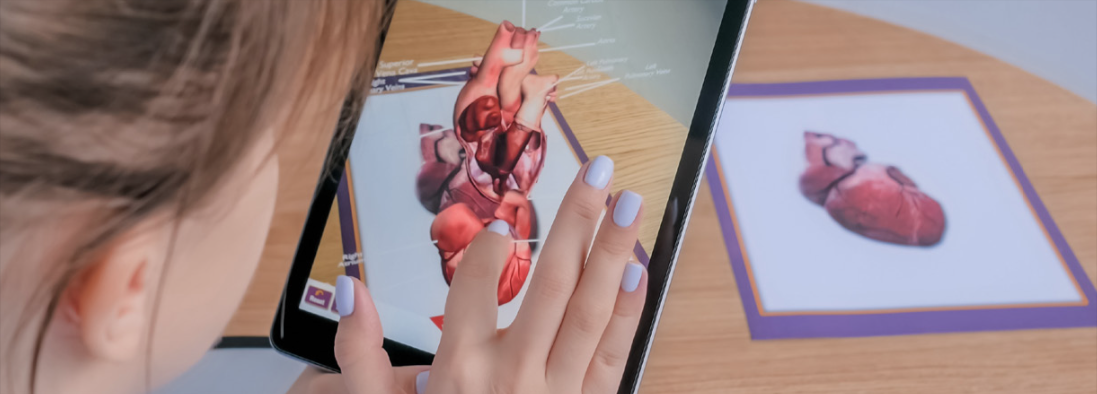
Creating Better Learning Environments
When considering learning environments, it’s important for learning and retrieval to take place under the same conditions so that the encoding and retrieving environments are equivalent. Medina explains, “At the moment of learning, many environmental features—even ones irrelevant to the learning goals—may become encoded into the memory right along with the goals. Environment makes the encoding more elaborate, the equivalent of putting more handles on the door. When these same environmental cues are encountered, they may lead directly to the learning goals simply because they were embedded in the original trace” (Medina 117).
Therefore, encoding and retrieving environments should be made equivalent to real world business and education. Simply, “It could be as simple as making sure than an oral examination is studies for orally, rather than by reviewing written material, or perhaps future airplane mechanics should be taught about engine repair in the actual shop where the repairs will occur.” (Medina 118).
Just imagine an archeology student in the field who has been digging. When they hit a stone, they feel its vibration, dig it out, clean it, and examine it. Years go by and you ask them about that type of stone. They’re able to recall many facets about that stone because of the rich encoding process that took place during learning. Now, take that same student in a graduate-level geology class learning about the differences between two rocks. Years go by and you ask them about the differences between the two rocks they learned about in that one lecture. They aren’t going to remember.
Consider an online geology class. What if, when you log in, the classroom is conducted on the edge of a volcano, just like the field learning in a PhD program. You experience visual, kinesthetic, and auditory of that environment, in addition to the written course content that is typical of didactic education. If we have a medium like this to teach, why not? With HReality, you can create any learning or working environment, campus, building, or classroom in the exact context of how that knowledge is used and transferred with kinetic integration.
Additionally, standardized testing is moving to competency-based testing. HReality allows for competency-based learning, which is extended through the experience. FabCom is conducting ongoing research with UAT to produce academic research that answers the question: Do students learn more and experience better retention of information when learning in a virtual space when compared to traditional online education delivery?
How is VR Evolving and Where is it Going?
When you think of virtual reality, what most likely comes to mind is bulky headsets. While headsets are a means to experience VR, VR has evolved past headsets and can be realized in a myriad of ways.
VR is a simulated environmental experience that can be just like real life or out of this world. VR has been primarily used for entertainment, education, and professional training. Standard virtual reality systems typically encompass headsets or multi- projected environments to generate realistic images, sounds, and other sensations that simulate a user’s physical presence in a virtual environment.
There are two types of VR: immersive VR and text-based networked VR (e.g., cyberspace). With immersive VR, your view changes when you move your head. Avatar image-based VR allows users to join the virtual environment in the form of an autonomous avatar or through real video feed. 22
Desktop-based VR displays the 3/4D world on a regular desktop display rather than through specialized VR equipment. This is the style of many first-person video games, where the use of responsive characters, triggers, and other interactive devices lend to the feeling of interacting in a virtual world. 22
How is AR Evolving and Where is it Going?
Augmented reality is an enhancive interactive experience that fuses the real environment with computer-generated objects to provide perceptual information, sometimes across multiple sensory modalities, including auditory, haptic, olfactory, somatosensory, and visual. AR layers 3D information over a live camera feed, allowing for real-time interaction and accurate 3D registration of virtual and real objects. 23
Considered a subsect of mixed reality, AR digitally manipulates the user’s surrounding environment to become more interactive through a perceptually enriched experience.
The value of AR is the seamless ability to blend a person’s perception of the real world with the digital, not as a simple display of data, but through the integration of immersive sensations, which are perceived as natural parts of an environment.
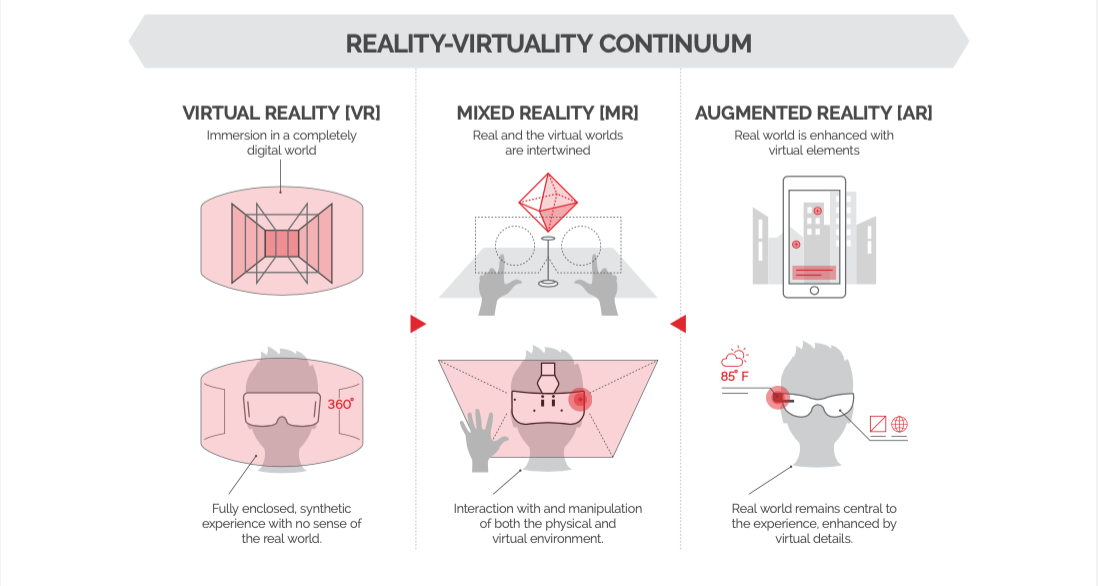
The Difference Between VR, AR, XR, and HReality
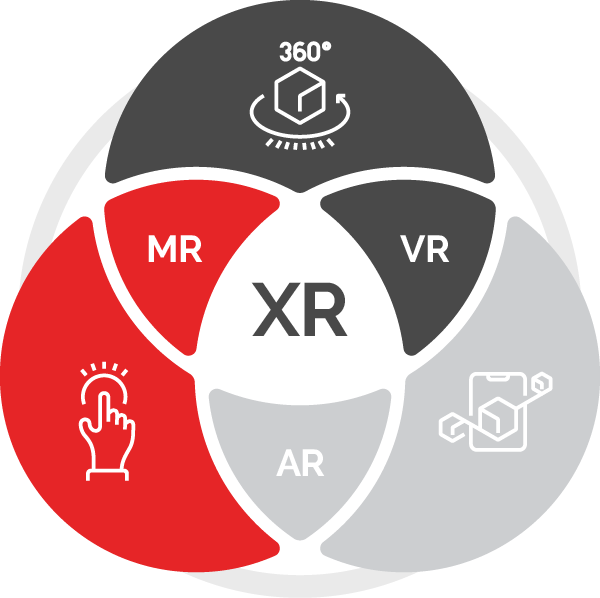
With VR, a user’s perception of reality is based totally on virtual information and stimuli. With AR, a user is provided with additional computer- generated information to enhance their perception of reality. Essentially, AR adds layers of virtual objects to the real environment, while VR is an entire virtual environment.
AR and VR can be further defined by mixed reality (MR), the fusion of the real environment and virtual words to create new visuals and environments where physical and digital objects co-exist and interact in real time. Neither taking place in the physical world or virtual world, MR is a hybrid of reality and virtual reality.
MR encompasses everything in the reality- virtuality continuum (a continuous scale ranging between complete reality and completely virtual), which also includes augmented virtuality (AV), the merging of real-world objects into virtual environments.
What is XR?
To make things more complicated, all these terms are further defined by X Reality (XR or cross reality), a form of mixed reality environment that’s a fusion of global sensor/actuator networks and shared online virtual worlds. It encompasses a wide spectrum of hardware and software, including sensory interfaces, applications, and infrastructures, that enable content creation for VR, MR, and cinematic reality (CR), a world grounded in actual reality but exaggerates details to enhance the storyline and overall aesthetic of a film. Essentially, XR is another umbrella term for AR, VR, and MR. 24

XR, as it has been applied thus far, has been a far-reaching, inclusive, and flexible term. The “X” represents a variable that defines a continuum that can also be expanded and extended in a multivariate sense (e.g., “XYR” = XY Reality). There is a reason for this. The possibilities of combining VR/AR/MR/XR with online, artificial intelligence (AI), and machine learning (ML) technologies are truly and fantastically far reaching. The modalities, environments, channels, use cases, and even subject matter can all be dynamically experienced by each user.
In relation to media studies and philosophy, XR is related to a multiple theory about virtuality, ML, computer vision, and the increasingly collaborative relationship between human and machine. Our growing ability to see like digital devices results in a world that continuously and rapidly blurring the lines between digital and biological.
AR and VR Have Converged and Emerged as HReality
These technologies are fluid. It’s clear that this technology keeps moving, advancing, and encompassing more ... that’s why we created Hybrid Reality (HReality), a mixed reality environment focused on knowledge transfer, professional networking, and communication.
HReality as a platform is a revolutionary, not evolutionary, use of XR technology, for real reality and situations in business and education. Combined with professionalication, HReality uses XR in a brand-centric and user-centric way to apply gaming and interaction methodology based on our marketing communications experience.
Using the knowledge of working on digital transformation and online learning interfaces for over 30 years, we developed HReality to be dynamically flexible because technology is a constantly moving target.
HReality is truly hybrid. It’s a cloud platform that’s continuously evolving and incorporating the best technology that drives interaction and connectivity at the next level, as new AR, VR, and MR capabilities come out.
Rome was Not Built in a Day ... And Neither was HReality
In a time before modern social media and dynamic digital content, imagine every advertisement you saw was personalized to you. Enter Tom Cruise passionately fighting for justice and that’s the world we glimpsed in Minority Report. While this isn’t a stretch today among the mass of channels and data- driven interactions, back in 2002, it transformed FabCom CEO and innovator Brian Fabiano’s vision for the future. After seeing the movie,
Brian turned to his wife and remarked “I am going to do that with FabCom before I retire.” She replied, “I hope there is enough time, you better get busy.” And almost 20 years later, the ideas that were imprinted are now coming full circle.
FabCom is now living in digital innovator Brian Fabiano's vision for the future of advertising. But ingenuity didn’t start during this millennium. Brian launched his career in the ‘80s with a disruptive innovation in the printing industry: he developed dryographyTM, the proofing system that could proof FM (frequency modulated screening) or stochastic screen angles at three micron sizes and is still used today for HD publishing. 25
After incubating the dryography technology and earning mass market share, one thing led to another, and the company was sold to a public company. Through the sale of that company, WebElite, an upscale offshoot of dryography meant to penetrate the masses, was created and raised the bar for high fidelity publishing again. Once again, the growth and success of that company was used to launch the next phase of innovation. By piloting that company’s growth, FabCom was founded.
FabCom is home to a team of award-winning creatives, technologists, and strategists. Founded in 1992, the pedigree of the agency goes back decades to grandfather technologies that continue to evolve. Originally launched to develop dynamic online brands and help lead traditional brands to new markets utilizing the Internet, the agency has evolved with technology and is still helping brands grow through digital transformation, this time from digital to virtual. Today, these capabilities have become the gold standard for integrated strategic marketing.
At the dawn of the computer age, leadership was developing how to leverage desktop publishing before the Internet, this technology progression multiplied many times over into dynamic type, personal salutations, and variable messaging within text documents. Then, there was a breakthrough with variable imagery dependent on segmentation, which led to linking the perfect brand, product, or service to the consumer. The last 10 years of variable video, web experiences, and automated and dynamic marketing funnels has built the mountain of accomplishments and customer-centric communications this firm is known for.

HReality incorporates many different types of custom programming, which came from years of development experiences across the spectrum of code. In fact, FabCom created the first fully automated sales platform out of custom programming and custom-built sales force automation programs with some of the first VOIP integrations in the country.
They pioneered CRM development even before the days of ACT 1.0. And just last year, the agency created the first ever CDM technology to replace legacy CRM technology with customer secure blockchain technology to protect and democratize the collapse of CRM and ERP and secure the customer’s data.
Neuromarketology Methodology
To better segment the market, the agency started to define the Neuromarketology methodology and augment the publishing of the right message, to the right person, in the right place, and at the right time, which has become a cornerstone of HReality in informing how the environment prompts users. The neuromarketing process, also known as brand attribute mapping or dynamic targeting, maps each of your target audience’s behavioral, demographic, and psychographic connection points to your brand, product, or service attributes.
The sum total of the mapping and attributes becomes a unique sociographic cohort profile. When targeting multiple segmentations within the same marketing funnel or advertising campaign, sociographic maps are leveraged to parse the right message, at the right time, and in the right channel.
This combination of automated, strategically aligned, one-to-one content development, with the real-time knowledge of where the customer is in the buying cycle, enables marketing efforts to achieve a better level of understanding of your individual customers within each targeted cohort. The new methods help quantitatively define how customers think and react to specific marketing messaging, thus allowing smart marketers to efficiently optimize the marketing influence to motivate and help dictate progressive action and new thinking for each individual segmentation.
This drove the agency’s ability to conceive strategy, creative, messaging, analytics, assets, media, channels, and highly complicated manufacturing or enterprise level operations all synced up to segmentations that were specific to delivering people the right message pertinent to where they are in the buying cycle. During the authoring of Neuromarketology, the agency created a portmanteau to help define a new industry convergence point, which has led to the coined term syntextualTM, the fusion of syntax-based and contextually semantic- distinguishable words and phrases based on an individual’s search intent.
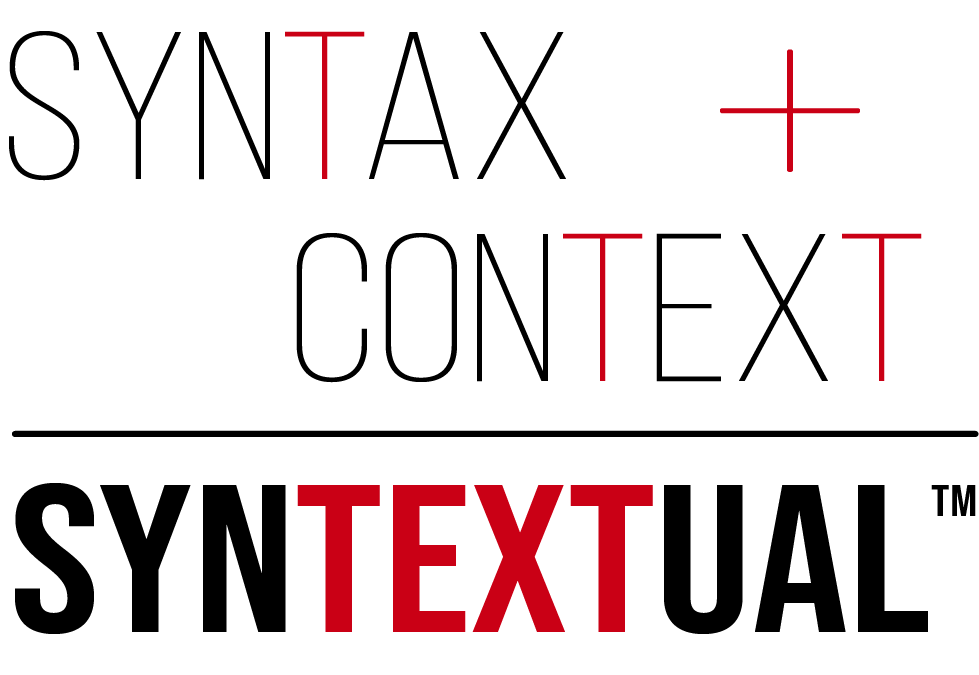
Funny enough, syntextual also naturally describes the emerging process of AI intent discovery by monitoring a user’s word arrangement within their surrounding geographic, tempographic, demographic, psychographic, and behavioral context.
Even Microsoft has jumped on board and created a software to do what we do. Project Cortex’s first product, Sharepoint Syntex, can collect, interpret, classify, and automate all content within Microsoft applications at scale. Essentially, converting unstructured data into structured data, which makes it possible to not only democratize, but also eternalize the continuum of tribal knowledge.
Continuing Innovation as a Top Integrated, Experiential Agency
This millennium, the agency brought on board variable data, augmented reality, eye tracking, high resolution video, and transmission technology, to name a few, all of which have culminated in HReality. With a pedigree of innovation and earning patients, FabCom built the first real-time online delivery platform five years before UPS or FedEx brought the innovation to the market.
The agency was also among the first to creatively embed QR codes and eye tracking technology in local advertising, specifically in ads for The Phoenix Business Journal’s Book of Lists. In fact, FabCom was even chosen as the first integrated marketing agency in the Southwest to become a Certified Partner for IBM Cognos Business Intelligence and IBM Watson marketing intelligence platform solutions.
FabCom helped launch the first game development curriculum, which birthed curriculums for VR, AR, and human-computer interaction degrees, helping create workforce and educational messaging and pipelines for the future. Some of the technology university programs the agency helped create years ago are now filling up our shop with these specialized hybrid workers. This led us to become the first independent agency nationwide to deploy node-based video editing technology to usher in Hollywood-level special effects within the advertising and video content.
Strategic thinking is driven by hard data insights derived from business intelligence and bigger data modeling. FabCom’s predictive analytics have created the only agency that guarantees advertising ROI nationwide. We even created and conceived fully integrated multichannel marketing dashboards two years before Google Analytics debuted. This has fostered the knowledge base from which the teams are now formulating quantum analytics.
Among the recognition/awards, FabCom has been ranked in the Phoenix Business Journal’s Book of Lists as a top integrated agency, consistently for the past 25 years. Industry recognition ranges from awards of excellence in alternate technology to top 10 advertising agencies, top 10 interactive marketing firms, communication arts, agency choice awards, top 50 most innovative companies, and more.
Today, FabCom has over 30 years of experience developing and deploying innovative, integrated marketing services that change industries, interfaces, interactions, and influences the rise of represented brands and effects within the advertising and video content.
Strategic thinking is driven by hard data insights derived from business intelligence and bigger data modeling. FabCom’s predictive analytics have created the only agency that guarantees advertising ROI in the Valley. We even created and conceived fully integrated multichannel marketing dashboards two years before Google Analytics debuted. This has fostered the knowledge base from which the teams are now formulating quantum analytics.
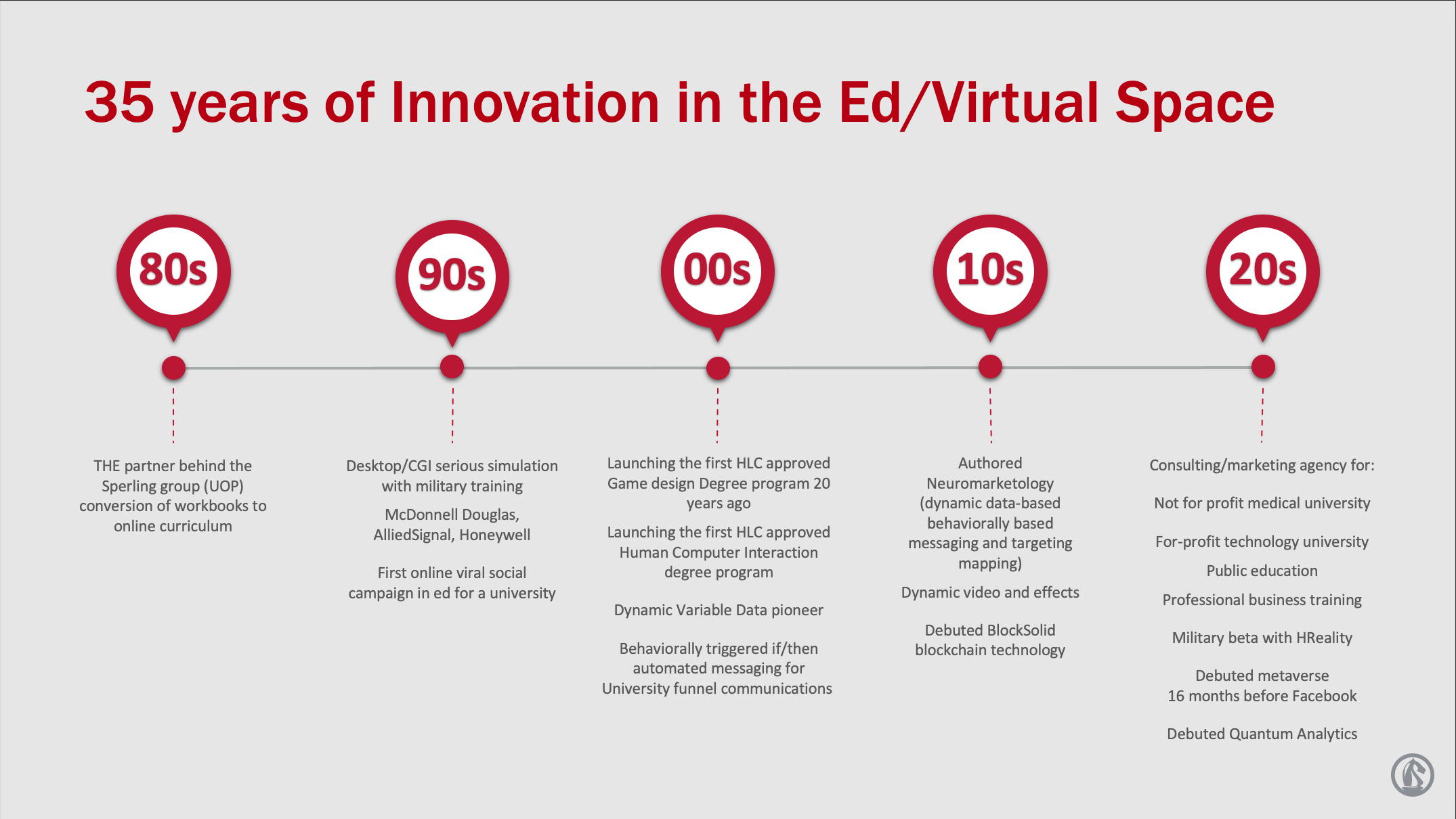
Among the recognition/awards, FabCom has been ranked in the Phoenix Business Journal’s Book of Lists as a top integrated agency, consistently for the past 25 years. Industry recognition ranges from awards of excellence in alternate technology to top 10 advertising agencies, top 10 interactive marketing firms, communication arts, agency choice awards, top 50 most innovative companies, and more.
The past decade has seen more firsts by FabCom. In fact, FabCom was the first MarCom agency to have a native crypto blockchain for commerce in the Southwest. And with HReality, became the first agency to provide heart surgery training with virtual reality, first to incorporate medical animators working in true non-goggle-assisted 4D, and the first agency in the Southwest to produce an entirely 4D virtual conferencing platform. To demonstrate the passion this team has for the future and innovative practices, they have won more special effects awards (the type of VFX you think of in Marvel movies) but leveraged within marketing, adverting, and branded experiential campaigns than any of the top film houses in the Southwest.
Today, FabCom has over 30 years of experience developing and deploying innovative, integrated marketing services that change industries and influences the rise of represented brands and fall of competitive brands. From comprehensive strategic planning that includes the latest in business and marketing intelligence to video production to virtual and hybrid event production, all 28 marketing services are natively produced and provided by the integrated agency, which has led to the knowledge required to push the envelope and harness the new capabilities of AR, VR, and MR.
Finding New Methods to Create Preference and Connection for Brands
As technology and methodology innovators, FabCom’s leadership has always been focused on finding new methods for small to midsized companies to compete against the Fortune 1000 brands. From the beginning, this integrated agency strives to stay 3-5 years ahead of the pack by learning and evaluating new technology first and bringing the best right-sized technology to our clients to create new growth and efficiency opportunities to empower their brand with added market share. Read FabCom’s full track record of firsts.
By going through the learning curves first and applying what we learn from the advancing marketing or communications technology, we are able to pick through and uniquely apply technology for our clients. In order to achieve that value and keep brands ahead of the market’s changing curves, a consulting firm needs to learn and understand all of the technology facets first. A true partner understands the technology capabilities, problems, and solutions to recommend the best fit for a particular client or industry.
One of our persistent values to the brands we’ve served over decades has been our consistent effort to drive the greatest value combined with prowess of deploying the tech with business and creative technologies, 3-5 years ahead of the pack to leverage that technology and turn around and apply it for the client.
The Integrated Agency Built to Harness New Technologies
The thing about innovation is that it takes the right roots of planning, timing/circumstance, and a good bit of persistence. We can influence the first, so we did.
The unique combination of skills and talents that have accumulated at FabCom are no accident. Strategically bringing together technologies and talents, the B2B2C agency diverged into film production, event production, data and analytics, and added AR and VR production to our repertoire to better leverage the prowess of the technology into the markets.
Within FabCom, skunkwork teams created many spinoff companies: Database Segmentation, Blocksolid, it’s fab, Scottsdale Interactive, HReality, HReality Events, HReality Education, HReality Enterprise, and HReality Experiences.
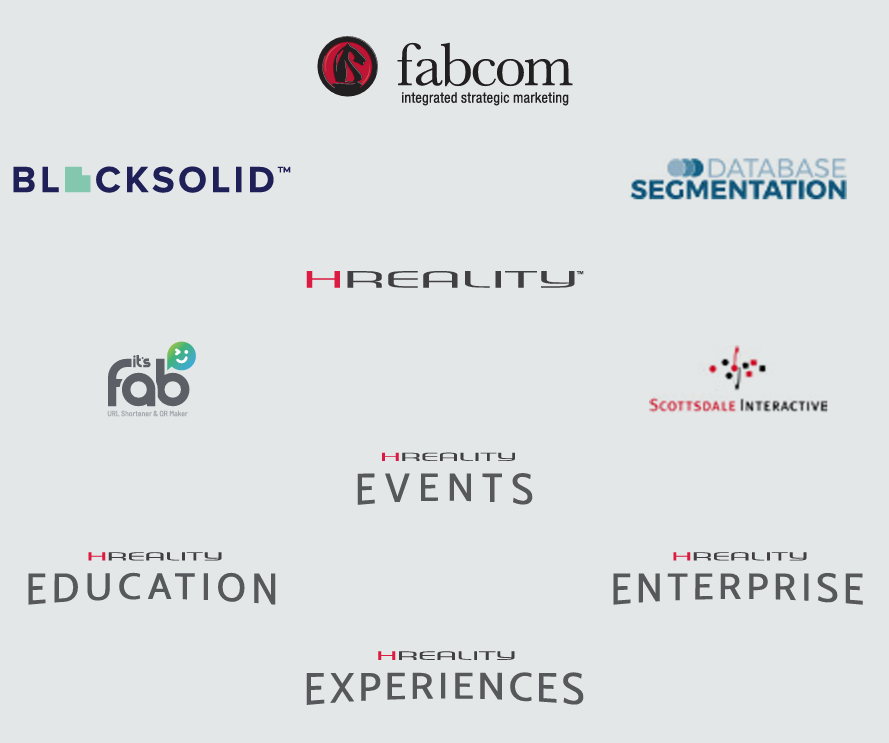
Then, FabCom created a virtual development team by assembling people from around the country and world as specialists in human- computer interaction, virtual reality, and game development to create HReality.
FabCom’s creative and technology studio deploys some of the latest 4K-12K technology, cinema-level animation, game engines, WebGL, and visual effects capabilities to create and deploy new ways for businesses to communicate with stakeholders.
A Specialized Team to Develop HReality
The HReality virtual development team is extra specialized and assembled from around the world.
Character Artists
Our character artists create high-resolution and high-fidelity visual elements for HReality. HReality avatars are fully working 3D models with a skeletal framework, functioning limbs, and finished textures, creating character bodies with real-life likeness. Outfits are designed by industry/type of event.
VFX Artists
VFX artists work on HReality to produce high quality video assets that creates preference and emotionally connects to viewers. Our VFX artist works directly with our Unity developers to create in-engine recordings using Unity’s Cinemachine.
The benefit of having virtual cameras is the ability to capture elaborate shots that would take hours upon hours of planning to replicate the mind's eye of gathering situational awareness and comfort. One example of this is an ariel shot that travels in an orbit around the conference room. Another benefit, if a shot needs to be tweaked by the smallest amount, it can be re-recorded in the exact same motion as the prior shot. This allows us to truly get the perfect shot.
Utilizing our entire post-production arsenal, we have been able to produce explanatory videos for HReality that keep the viewer’s attention.
While parts of the platform were still in production, the team was able to demonstrate its full capabilities through the use of video production to conceptualize potential changes we need to make to each element before the product is ready to debut.
Unity Programmers
Highly specialized programmers with a mash up of skills are required when it comes to using the Unity Engine to create virtual environments. They must accumulate cross discipline experiences in many areas that help with the HReality project, like Network/ Multiplayer systems, AI, gameplay/features, etc. They cover functionality implementation, feature development, optimization, and source control management.
Unity developers also cover the management, implementation, and deployment of UI/UX elements into the digital experience, as well as a deep understanding of the Unity platform’s real- time development and different moving parts and mechanisms.
This includes, but is not limited to, laying out proper UI hierarchies so that the UI flows together smooth, as well as setting up layout elements to allow for more graceful addition (or removal of) UI elements as needed. This also involves making sure the UI and the data it’s manipulating are correctly integrated and referenced.
3D Animators
Our 3D animators bring inanimate objects within the HReality environment to life. Through 3D modeling and texturing, objects are given scope, weight, and meaning ... bringing new visualizations into being.
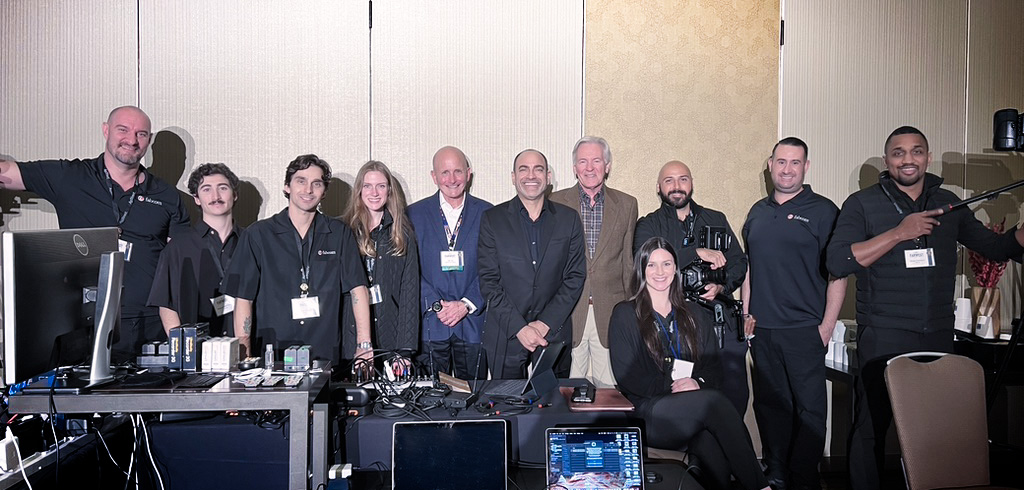
Benefits of Using an Integrated Agency to Produce Your Event
In addition to the specialty team members who work on the development side of HReality, FabCom supports HReality Events with a cross- disciplined pre-event planning team inclusive of:
- Strategists
- Project Coordinator
- Business Analysis
- Production Manager
- Creative Director
- Art Director
- Graphic Designer
- Copywriter
- Film Production Project Coordinator
- Cinematographer
- Sound Tech
- Color Tech
- Video Editor
- Animator
The difference that a top integrated marketing and advertising agency makes is return on your investment. While HReality Events is already revolutionizing the event industry with streamlined pricing that ensures event hosts retain 70% event profits, HReality Events also includes affiliated marketing services and event support by FabCom.
Moreover, with FabCom as the agency of record, HReality Events offers AI automated customer experience funnels inclusive of lead generation, lead nurture, and revenue diversification, in addition to the slew of event deliverables such as automated emails, media kit/sponsorship brochure, event branded landing page, and unique portals for each type of user. See everything HReality Events has to offer.
When you hire an integrated agency as your event production company, you receive more than a successful event and a couple of videos squeezed from the show flow. You amass an entire support team steeped in classic marketing methodology, digital transformation, traditional event production, and virtual technology convergence.
The Start of HReality
The first seedlings of HReality can be found in an old idea. A couple years ago, the agency started development on a 360-degree, interactive tour of the office and studio space.
FabCom VR: The Old Paved the Way for the New
To film the tour, an Insta360 camera, a spherical device with six different cameras placed equidistance from each other around the equator of the device, was attached to a Double Robot and drove around the office to record the environment. These cameras record more than 60 degrees overlap, which was necessary to line up the different angles in post-production.
Nuke, a visual FX software, was the main program used for all the effects. CaraVR enabled the team to stitch together six different angles seamlessly into a high quality 360-degree video file. After the video was stitched inside of Nuke, more nodes were added to the pipeline to create various different effects.
For the web dev side of things, the team used a JavaScript library called A-Frame.js. A-Frame is best described below:
A-Frame is a web framework for building virtual reality (VR) experiences. A-Frame is based on top of HTML, making it simple to get started. But A-Frame is not just a 3D scene graph or a markup language; the core is a powerful entity-component framework that provides a declarative, extensible, and composable structure to three.js.26
This library creates a 360 environment (the camera viewpoint is at the center and the scene is a globe around that camera). Since all of this is browser-based, the team also used plain old HTML, CSS, and PHP in addition to the JavaScript.
Then, the 360 videos were laid over the inside of the “globe” that surrounds the viewer camera and put on a loop to give the illusion of a live world. From there, every single room or office in the building had a main unique ID that was tied to invisible hotspots (or buttons) within the 3D environment.
Read the full story of FabCom VR here.
An AR Experience Prototype
Funny enough, the second seed of inspiration for HReality was focused on the AR side of the experience. The next buddings of HReality were in retail; a client had a contract for AmazonGo test stores and hired the agency for strategy and interface work. The interface work included smart digital screens/signage (IoT- integrated and face recognition) for interactive, IoT-integrated convenience centers.
Elements of HReality Derived from the Failures and Successes of the Testing
HReality is a mixed reality environment created through the combination of AR, VR, cinematography, Lidar, 3D animation, and spatial digital computing. HReality takes what we’ve learned in other industries and truly mashes them up to replicate real world, professional interaction. What is the value? One-to-one triggers of networking, learning, admiring, coveting, these human characteristics of human interaction.
- High resolution video is used as an interactive layer and is streamed live or prerecorded and embedded into the platform.
- High resolution 3D animation combines models of objects constructed out of geometrical vertices, faces, and edges within a 3D coordinate system and programmed movement. Then, sculpting and textures are added for realism.
- AR, VR, and mixed reality are used together to immerse users in a fully artificial digital environment with spatial digital computing.
- Lidar measures distances within an environment through laser light. Laser wavelengths are then used to create a digital 3D representation with the true perceived distance between objects.
- Spatial digital computing allows for 3D sound, haptic sound, or special sound, enabling users in the HReality environment to recognize people next to them verses three people down.
- Haptic integration provides for kinetic feedback, creating the experience of touch through various modalities such as vibrations, forces, and motions.
HReality combines converging video technologies to dynamically integrate and digitally overlay physical footage into the virtual world, allowing real-time interaction and an enhanced virtual user experience. When combining real environments, augmented reality, and virtual reality, the technologies overlay to create amazing and seamless, brand-centric parallel reality environments.
For the last 10 years, the linearly progressing standards have been relatively static compared to the exponential and discontinuous innovations of the development platforms that debuted in 2020. Convergence and evolution of VR software development has been applied as a primary driver for HReality to create revolutionary virtual B2B interactions based on the premise of personified one-to-one interactions.
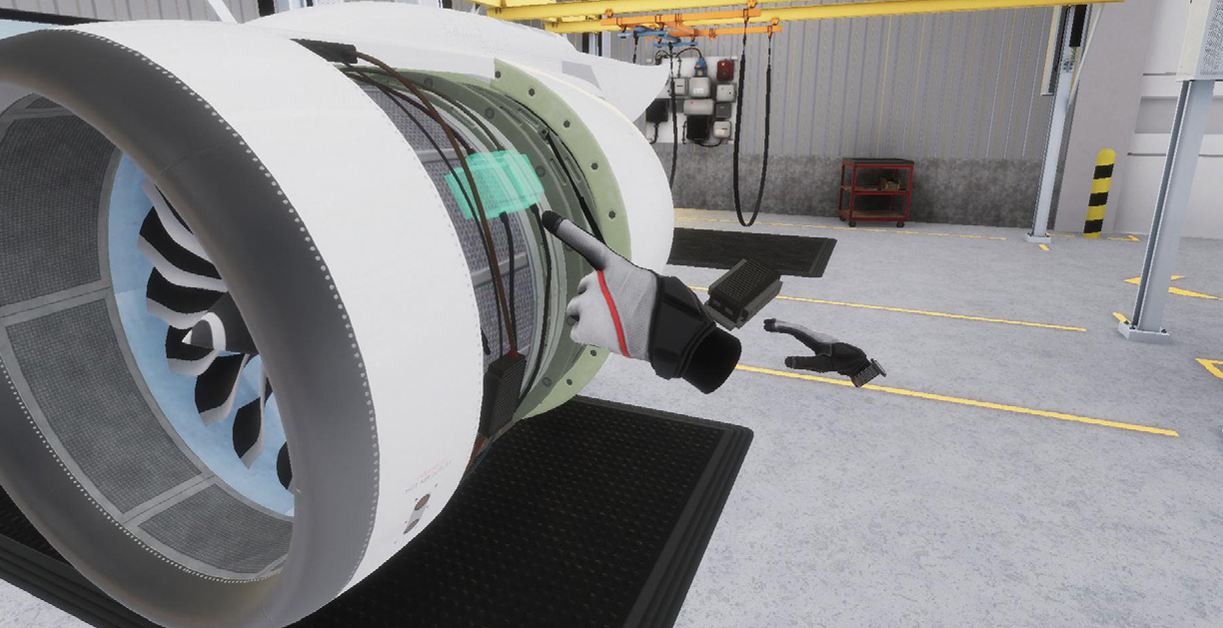
What is Spatial Digital Computing?
Similar to VR and AR, spatial digital computing is another convergence of the physical and digital words. Spatial digital computing digitally represents the real world through sensors and motors that digitize objects that connect via the cloud. This capability is combined with high- fidelity spatial mapping that enables a computer “coordinator” to track and control the movements and interactions of objects as a person navigates through the mixed reality.
Spatial computing makes digital twins of objects, people, and locations through GPS, lidar, video, and other geolocation technologies to create a digital map of a room. Software algorithms integrate this digital map with sensor data and digital representations of objects and people to create a digital world that can be observed, quantified, and manipulated and that can also manipulate the real world.
Spatial computing offers new opportunities and efficiencies for human-machine and machine- machine interactions. Furthermore, allowing for 3D sound, haptic sound, or special sound, enabling users in the HReality environment to recognize people next to them verses three people down. In a group setting, such as a classroom or meeting, this is very important for knowledge transfer. When you’re interacting face to face, it’s easy to match a voice to the person. Digitally, or virtually, not so much—on Zoom, you’re lost for the first 15 seconds someone is talking.
The mind questions who is talking, desperately trying to match voice to image—inside HReality, spatial sound allows users to differentiate people by location. You can hear when someone is talking next to you or across the table. You hear the sounds of the environment as you walk through the environments.
The Conundrum of Evolving Technologies
Adopting new technology at the enterprise level is a conundrum. If you don’t adopt it, it will pass you by, if you do, you’re stuck with yesterday’s technology. Using the knowledge of working on digital transformation over the last decade, we developed HReality to be dynamically flexible because technology is a constantly moving target. HReality is truly hybrid as it’s continuously evolving and incorporating the best technology that drives interaction and connectivity at the next level, as it comes out.
During the building of HReality, the downloadability of the platform was a key architectural element from the ground up. By leveraging the new class of real-time development platforms, HReality seized many benefits like being cloud-based, having insanely fast prototype speeds, and adaptability that other professional virtual environments struggled with.
An old friend always says, the mind only knows what the eyes can see.
The launch of Call of Duty mobile inspired us. Once our development teams benchmarked the amount of speed and universal “playability from most any connection” delivered via the cloud for COD mobile, we knew we could overcome the barriers our competitors were facing. This led the agency to build the platform on the same basis of ubiquitous playability, which became feasible in the mid-2020.
The Technical Side of HReality
Usability and Superior Quality Differences with HReality
Before mid-2020, in order to make the leap to real world professional VR fidelity, speed, file size, and playability of video online, the imagery file sizes needed to be 300-400% more. When comparing to the old methods of serving high fidelity imagery to interact with in real time across the web, HReality addresses these issues head on.
The majority of virtual environments’ installation size are the assets (the images you see and interact with). So traditionally, virtual environments made prior to mid-2020 with the emerging real-time development platforms were in the ballpark of 500 mb. To get the environment down to 100 mb, a platform developer would have to severely degrade the quality of the assets and the environment still wouldn’t be any smoother.
The HReality virtual platform is designed to operate under the bar of normal high-speed business internet performance and provide over 400% more resolution at 25% of the file size and transfer speeds when compared to what has been measured with most early competitors.
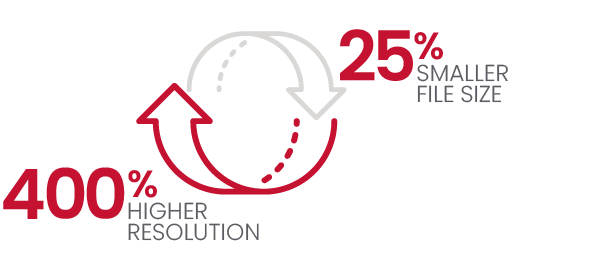
Comparing HReality to the bandwidth problems of the evolutionary technology most are now interacting with is not taking into account the discontinuous innovations within this mashup resulting in how this was built, it’s not what the competitors are doing.
Real-Time Application Fixes
An important attribute that overcomes most major challenges on live virtual event production days, is working through beta and evolving with market rapid reaction (same day, same hour). The agency can push application changes or fixes in real time for Mac, web, iOS, Android, and consoles all at once. This means that if there are certain issues the user experiences, not everyone is stuck with that problem, it can be updated and iterated through everyone’s app. The agency believes this commitment and architecture is a foundational issue of difference by the way we engineered the product.
International B2B2C marketers know it is all about usability and value received based on each stakeholder's different perspective. We focused on cross platform functionalities.
Another advantage of our development timeline is that we have the ability to code it once, and then it’s dynamically populated across disparate devices and screen sizes. This allows the critical nature of connection, bandwidth, bring your older devices to work ubiquitously on the HReality platform.
VR/AR Data and PII Security is Multiplied Hundredfold with HReality
Additionally, firewalls are an inevitability of modern computing ... at the corporate, personal, and enterprise levels. The new class of platform development allows ubiquitous playability through any firewall on any platform, including mac, web, iOS, android, and console. There are also multi-playability options to move from app to web browser, depending on whatever is easier for the user. The user has many options to pivot, if needed.
The professional application of this emerging technology with the priority and fidelity of movie- level non-magic transitions has not previously attempted in the gamified worlds.
FabCom Debuts Quantum Analytics in 2021
Similar to the qubit with quantum computing systems, data capture now needs to fully encompass simultaneous interactions in two planes of space. Instead of the user just interacting with a static screen, they’re now interacting within the environment and new types of data are realized, such as how close do users stand to each other when interacting and the resulting behaviors, all while “normal” online interaction happens (e.g., eye tracking, clicks, etc.). This leads to the concept of quantum analytics.
This opens the door for new thinking, made possible by the byproduct of the combined innovations with HReality. And new questions, such as what is the biggest opportunity between empowering business, learning, and networking interactions with real-time, personally controlled avatars?
Or how about more specific tracking for how people feel and understanding how differently, synergistically, and/or homogenously behaviors are when someone is driving an avatar privately behind a desktop vs. the avatar acting out in environment. Quantum analytics creates a whole new realm of one-to-one behavioral targeting and business insights the word has yet to experience.
Thinking about and starting to define quantum analytics opens the door for new perspectives.
Applications of HReality
HReality can be purposed in a multitude of ways including custom virtual environments, virtual classrooms, corporate training, and conferences/ conventions through HReality.
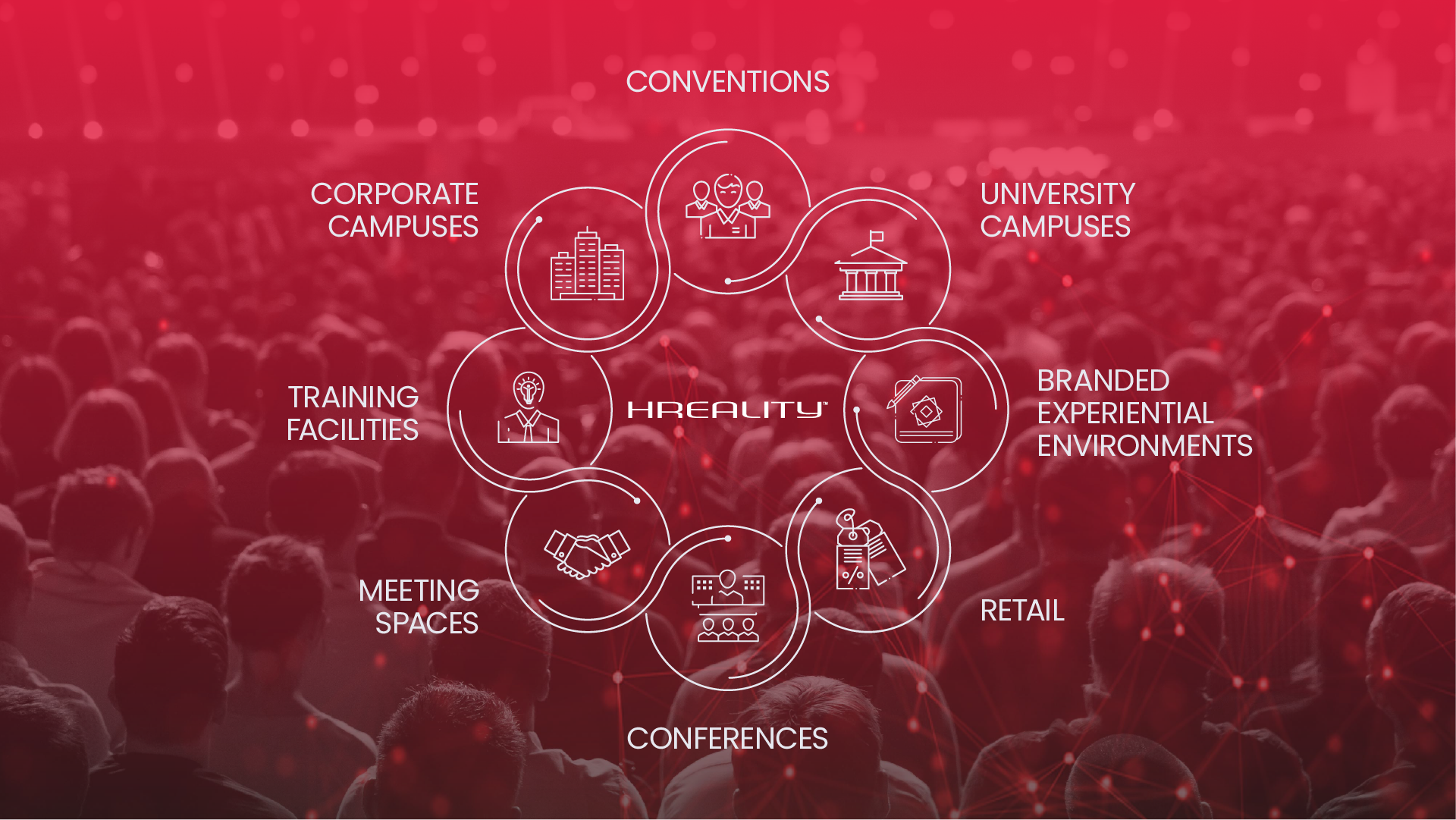
HReality for Events and Conferences
Revolutionizing the professional event industry, HReality Events is an all-in-one virtual hosting platform for conventions, conferences, and tradeshows with a focus on business networking, knowledge transfer, thought leadership, and educational trainings.
This first-of-its-kind platform offers integrated dynamic communications with user-friendly interfaces and portals that allow hosts to download and invite large databases with a click of a button, sending dynamically populated, personalized marketing communications to prospective leads and attendees through automated customer experience funnels.
The platform also offers sponsors and exhibitors the ability to customize and manage their booths, generate digital collateral to leave with attendees, and provides post-event analytics on booth visits, collateral downloads, attendee interactions, and much more. Just like the full environment, all virtual booths in the exhibit hall are fully interactive and explorable.
Through virtual showrooms and demo centers, customers interact with conference content in a 4D environment and explore interactive equipment/products/etc. illustrations that allow every element and operation to be interacted with.
Breakout rooms and amphitheaters provide the real conference experience with enhanced content focused on the reason people attend: knowledge transfer. These rooms scale to your needs, whether that be intimate breakout rooms for round table discussions and breakout groups or 1000+ person amphitheaters for keynote speakers. All rooms include spatial sound.
Lastly, HReality Events also includes in conference sponsorship and advertising opportunities in addition or supplemental advertising and sponsorship opportunities in event communications, additional collateral, and promotions for hosts to maximize their return on investment.
HReality for Corporate Training and Education
Corporate training can be one of the most expensive and time-consuming ventures a business undertakes, but the cost of not providing industry-specific training is harmful to the bottom line, all while access to training creates immense barriers. Online content delivery has assuaged some barriers to corporate training, although, for hands-on experience training this has been detrimental.
Whether training a cardiovascular surgeon to change a heart valve or a mechanic to fix an engine, some learning is just better suited for different delivery methods. With the revolutionary ability to include kinesthetic learning, HReality Education enables users to fully interact with in-environment objects and provides haptic and kinetic feedback to improve learning and retention.
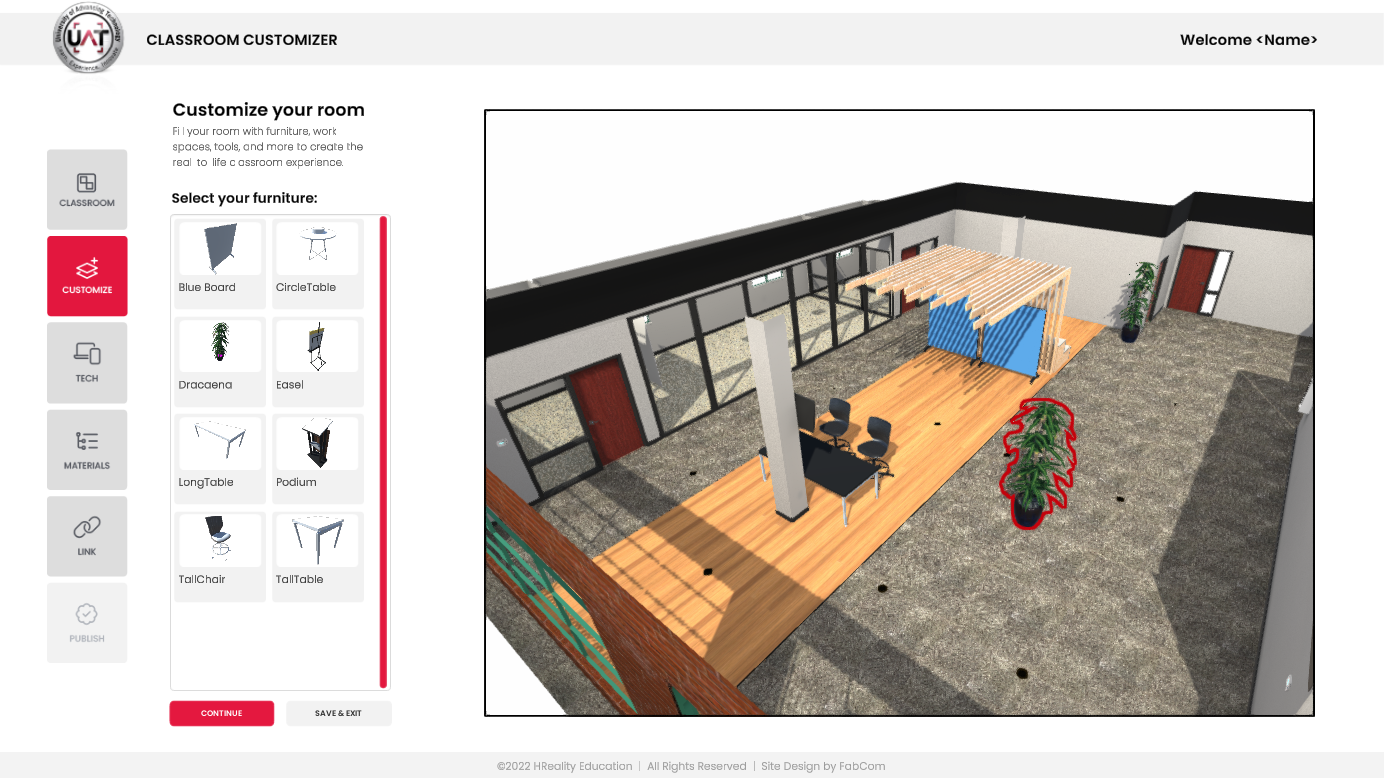
With a user-friendly WYSIWYG interface, HReality Education enables institutions to flexibly host modular educational courses with optional self-service certificate outcomes at scale. Flexibly and scalability host modular educational courses with optional self-service certificate outcomes. HReality is perfect for traditional classrooms experiences, corporate training, industry training, new product introductions, and more. The HReality learning interface includes didactic information, resource library, interactive 3/4D animation, haptic feedback, and spatial sound.
By aggregating the digital distribution of company training content, HReality enables you to strongly protect your brand. Control brand erosion through single sign on, double authentication, etc. and provide dynamic access, use, and transparency in the last mile where users are accessing your training content.
Virtual Classrooms
The value of academia, mentorship, and experiential learning has depreciated with the induction of online learning—much of the human-to-human motivators and interactions were replaced with message boards, video lectures, and the repetition of weekly assignment submissions. HReality is actively counteracting this by bringing back the connective, human aspect to online learning.
HReality classrooms introduce natural human behaviors and appearances into a simulated environment to improve learning, incorporating all four learning modalities, experiential learning, and mentorship. The HReality learning interface includes didactic information, resource library, interactive 3/4D animation, haptic feedback, and spatial sound.
HReality Custom Virtual Environments
Virtual Tours
Provide the real experience and feeling of your facility with a true virtual tour. Tourists can walk around, interact with your environment and your people, and learning about your operations along the way.
Virtual Graduations
With the purpose of virtually emulating the traditional experience, HReality builds environments on spec to perfectly match your traditional venue with added digital benefits. Prior to the ceremony, graduating students receive a personalized link to their private family “chat room.” This link can be shared with family and friends, so they can watch the virtual ceremony together with video and audio capabilities that are private to their group.
Inside the HReality Events Environment
HReality Quick Maps
Quick maps are dynamically populated, so when someone uploads and pays for their booth, their logo uploads to the map. It’s amazing and fast. It can be accessed through the show guide (map is in the centerfold) and also at the front desk during virtual check in.
As discussed above, a lot of research has gone into body movement, the teams are also studying conference goers’ behaviors when navigating the environment. Since it’s about interaction, discovery, networking, and knowledge transfer, if someone clicks to one area and jumps out, how is that good for the hosts, speakers, other attendees, and exhibitors?
After decades of producing these conferences in person, streaming them, and attending as sponsors and speakers, the agency believes there needs to be a win-win-win between the attendees and the sponsors/advertisers who are working for commerce, built into the design of the virtual platform. The same way we do when we build a real convention center or plan a real conference by creating value for the sponsors/ advertisers and attendees.
To ensure that creating, sponsoring, hosting, etc. these events is beneficial for everyone, the focus is networking, knowledge transfer, and interactions. We’ve scripted the values for each of the stakeholders and built the platform to specifically match up. By design.
The platform will have direct “Scotty beam me up” transport to wherever a user would like to be with a magical click and influence the experience of true one-to-one discovery, networking, knowledge transfer, and trust building between professionals and brands.
Photorealistic and Personalized Virtual Avatars
The agency has invested a tremendous amount of time in defining the professionalication and personification. HReality users are empowered to bring in high resolution, and at our speeds, is an incredible defining and visual difference.
What the team has accomplished with Lidar technology and visual effects over the last 10 years in the entertainment industry, provided an approach to implement this with high fidelity and lower bandwidth requirements.
HReality loads faces of the personified and realistic avatars consistently at HD fidelity in under 45 seconds. Once a user uploads their photo, they can invest as much or as little time as they wish personalizing their avatar (clothing, accessories, skin tones, body types, etc.). The team is currently working on additional body types with a focus on inclusion, diversity, and personification.
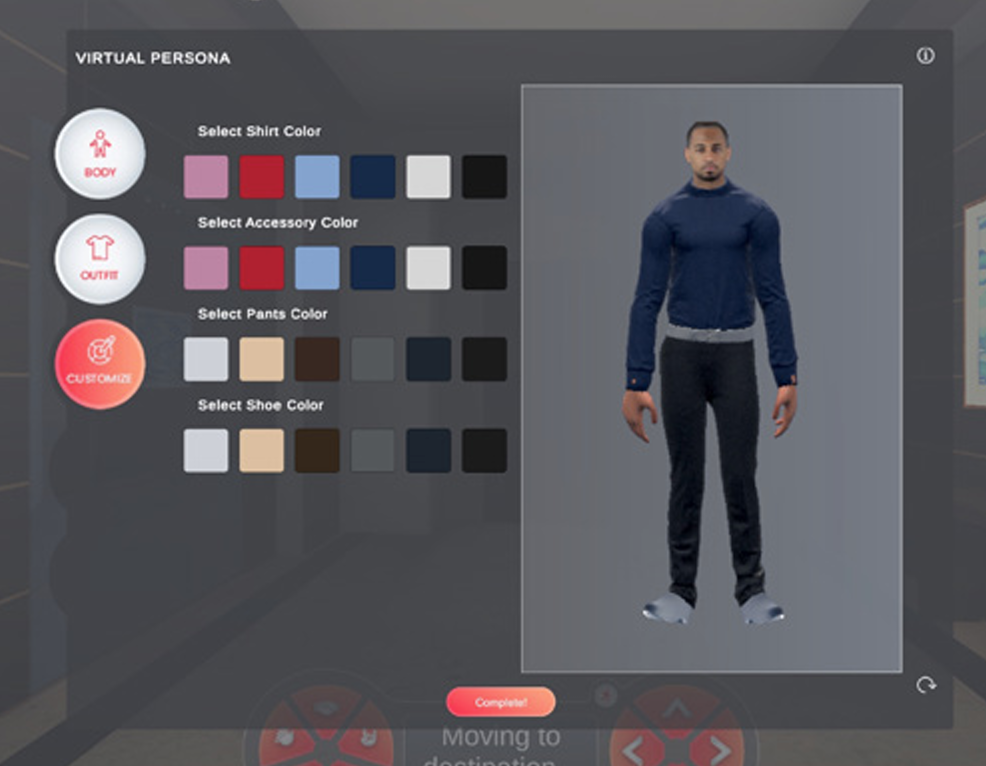
Our target has always been to create something more efficient (than the real thing) and something that creates more value (interaction) than the real thing (knowledge transfer).
Our “one touch slider” controls will be swift, fun, and intuitive and will be focused on creating the most dynamic and professional business personification. The slider format allows for left/ right slider changing of the body width and up/ down slider for changing of the height. We are using 3–5-year-old standards of game play within the interface, so the older, risk adverse, or even half full audience can find their way to see our difference. Users can pick their skin color on the color wheel and or we will automatically trigger from the scan of their face from the HD avatar face creation.
Users can have options, if they choose, for their clothes that are specifically designed per industry for specific business standards. Not only will we have generic body personas that match the population of the U.S., but we will also provide the option for a one-click average avatar (the no options option).
Virtual Reality Speakers and Thought Leaders
There will also be an option for speakers to use a provided mocap bodysuit and record for a different level of fidelity (think of rigging the best heart surgeon in the world to perform surgery), as there are instances where we want to rig much more than capable now with much higher fidelity.
Although, for normal business conferencing, everything will work much better than the class of virtual platforms on the market now and with only a phone or webcam across 5G or any modern business networks (most have been updated in last 18 months).
An easy example to visualize is the importance of matching clothes to the occasion. By wearing clothes that are consistent with the occasion and messages we want to send others, we can positively influence their behavior.
Furthering the fidelity of interactions, HReality uses your video camera feed and AI to map your mouth as it moves to be reflected in your character’s mouth in real time. This allows for genuine expressions, reactions, and personal communication mannerisms.
One-to-One Kinetic/Haptic Interactions
The agency engineered booths to mirror the real world rather than implementing a continuation of what virtual was and has been (a duplicate online interaction vs. the primary interface of interaction). All of the functionality you would normally have in a booth is the same with the way we engineered it.
This virtual environment’s entire purpose is to capture all these areas to include them in the application, so it more closely mimics the real world. Doing this, a normal event that takes 25 people to produce as a host, can now be produced with two people... with event ticketing, messaging, promotion, design, IT, ecommerce, and other capabilities all built in.
HReality is providing full haptic interactions for training and competency certification. HReality creates immersive learning experiences and has been working in beta with multiple industries. In healthcare, HReality has provided a modality virtual training for non-invasive heart surgery.
For academia, HReality is conducting a peer-reviewed study in conjunction with a technology university to quantify the learning and retention differences with the augmentation of haptic and full 4D first-person immersions into the subject matter (without headgear). The study will highlight the differences between virtual experiential learning and learning within a traditional online communications class through a conventional LMS. Used as a baseline, this course has been delivered to over 10,000 students.
On the opposite end of the spectrum, HReality is creating interfaces for mechanics, teaching virtual engine repair, among others. By facilitating repairs in real life conditions based on the environment the student will be operating repetitive motions, kinetic feedback enables vocational training, re-training, and skill development.
For more information about applying open source haptics to your HReality experience, contact Team FabCom. As pioneers of this space, we custom configure any haptic experience that emulates reality.
The HReality Difference—A Passion for Professionalication
Simply, HReality virtually facilitates one-to-one interactions, knowledge transfer, and learning in a fully realized and autonomous environment. This poses unlimited opportunity for events and education, in addition to unique, industry- specific applications, like retail.
Up to this point, the focus of virtual has been on fun and enjoyment, but HReality is taking virtual to the next level by putting the focus on learning, value, relationships, commerce. It’s truly the professional evolution of gamification.
Vision for the Next 30 Years
FabCom believes that same thing that happened between ‘90 and ’95 will happen again.
Just as catalogs turned into websites, websites will turn into interactive virtual experiences. Why would you keep a 2D representation of your brand with stagnant messaging, when you can provide an instant virtual interaction with your best employees in real time? Why would consumers fill out a help desk ticket when they can interface directly with engineers and IT professionals?



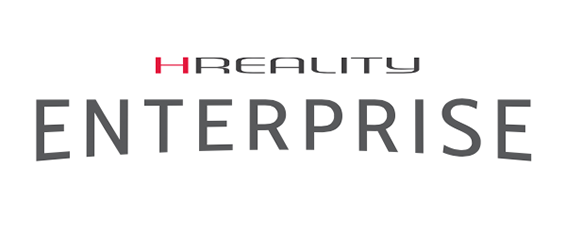
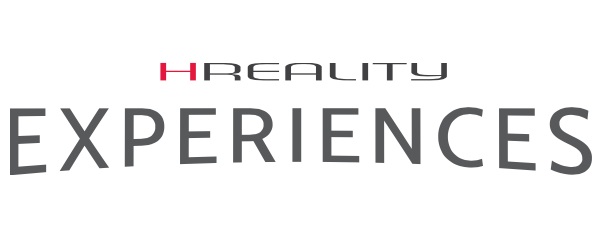
References
https://en.wikipedia.org/wiki/Gamification
https://slejournal.springeropen.com/articles/10.1186/s40561-019-0098-x
https://en.wikipedia.org/wiki/Human%E2%80%93computer_interaction
https://www.verywellmind.com/types-of-nonverbal-communication-2795397
Foley GN, Gentile JP. Nonverbal communication in psychotherapy. P Psychiatry (Edgmont). 2010;7(6):38-44.
https://en.wikipedia.org/wiki/Kinesics
Navarro, Joe. What Every Body is Saying: An Ex-FBI Agent’s Guide to Speed-Reading People. 2008.
Medina, John. Brain Rules. 2008.
https://en.wikipedia.org/wiki/Facial_feedback_hypothesis
https://en.wikipedia.org/wiki/Facial_feedback_hypothesis
https://decorumetiquette.com/business-etiquette-training/
Navarro, Joe. The Dictionary of Body Language: A Field Guide to Humana Behavior. 2018.
Wezowski, Kasia; Wezowski, Patryk. Without Saying a Word: Master the Science of Body Language & Maximize Your Success. 2018.
https://experientiallearninginstitute.org/resources/what-is-experiential-learning/
https://www.simplypsychology.org/learning-kolb.html
https://vark-learn.com/introduction-to-vark/the-vark-modalities/
https://www.roadtovr.com/ucla-vr-surgical-training-study-osso-vr/
https://www.researchgate.net/publication/234654518_A_Framework_for_Culturally_Responsive_ Teaching
https://www.debonogroup.com/services/core-programs/six-thinking-hats/
https://en.wikipedia.org/wiki/Virtual_reality
https://en.wikipedia.org/wiki/Augmented_reality
https://en.wikipedia.org/wiki/Extended_reality
https://www.piworld.com/article/new-waterless-innovations-imperial-18138/all/
https://aframe.io/docs/1.2.0/introduction/
https://www.scientificamerican.com/article/spatial-computing-could-be-the-next-big-thing/
Buchanan, Mark. The Social Atom: Why the Rich Get Richer, Cheaters Get Caught, and Your neighbor Usually Looks Like You. 2007
